History of Modern Architecture Midterm Study Set
1/69
There's no tags or description
Looks like no tags are added yet.
Name | Mastery | Learn | Test | Matching | Spaced |
|---|
No study sessions yet.
70 Terms
Beaux Arts
This movement within city planning and urban design that stressed the marriage of older, classical forms with newer, industrial ones. Common characteristics of this period include wide thoroughfares, spacious parks, and civic monuments that stressed progress, freedom, and national unity.
Paris Opera House
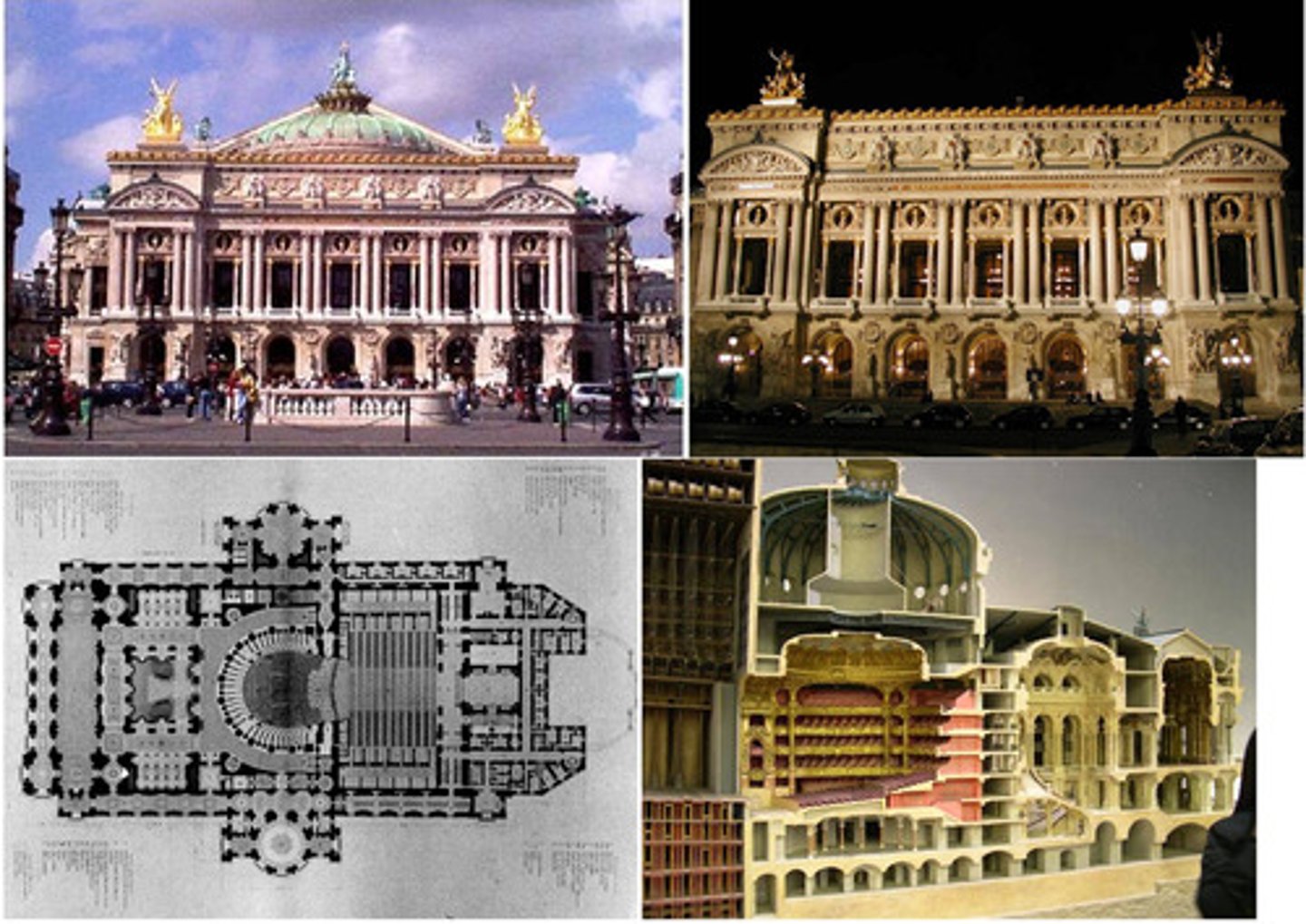
Arts and Crafts Movement
a reform movement that proposed a revival of crafts (especially the minor arts, objects actually produced by the designer in a small workshop) as the agent for economic justice, social improvement and artistic renewal. The works ideally looked like they were produced by hand, according to traditional methods. They used local materials and followed local and traditional forms. The works often have a distinctly medieval character to them, demonstrating their connection to the Gothic Revival.
Philip Webb : Red House, Bexley Heath (1850's)
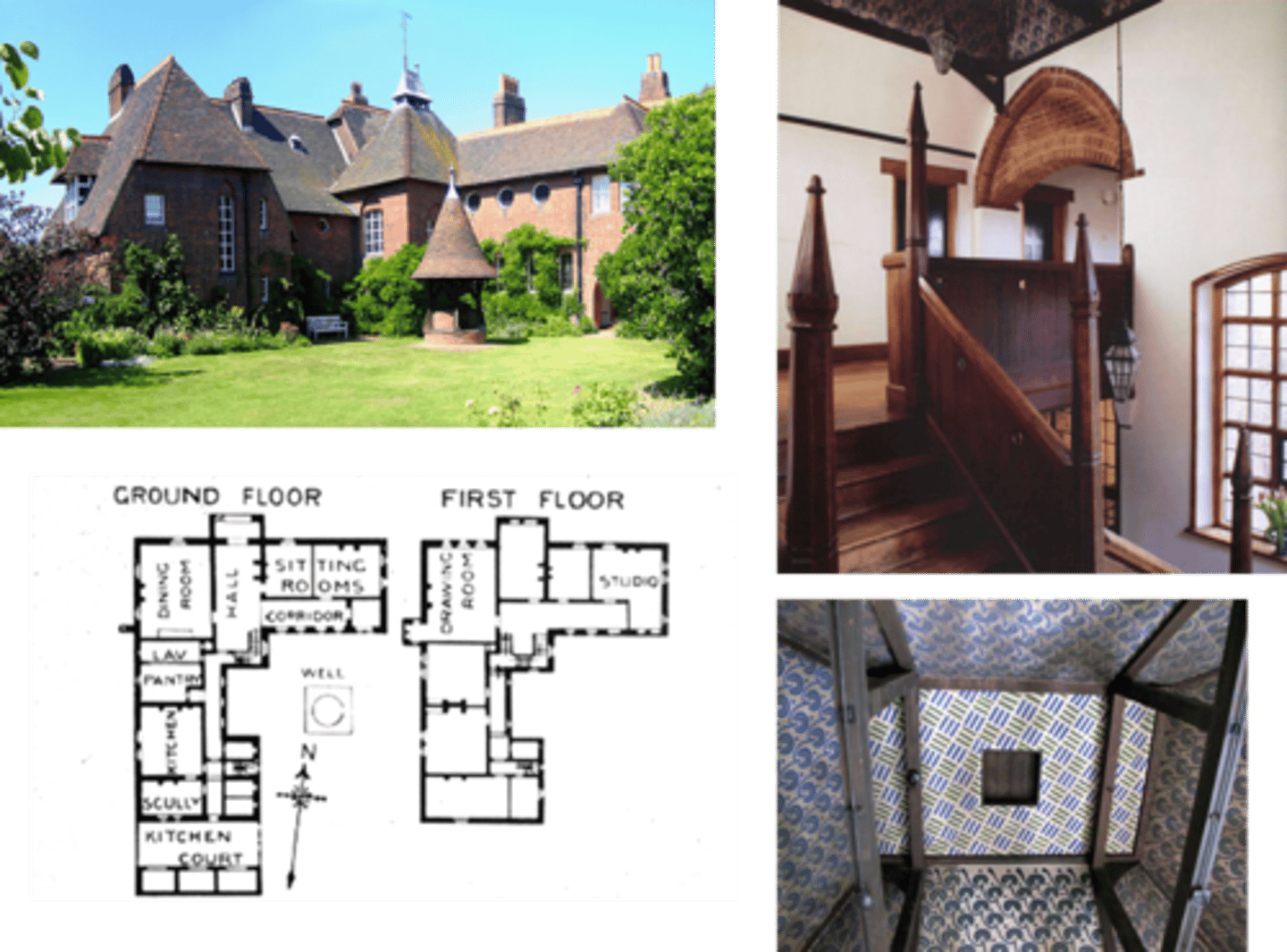
Rationalism
a reaction to eclecticism, and a response to new materials and new building types. In a search for the appropriate architecture for the modern era, Rationalists were often inspired by works of engineering. Seeking to make use of new materials, they advocated studying and employing the capabilities of iron, steel, sheet glass and concrete. Seeking solutions to new building programs resulting from social and economic developments, they sought straight-forward, logical planning. In all of their efforts, they advocated a building devoid of applied decoration and historical references.
Joseph Paxton : Crystal Palace, London (1850's)
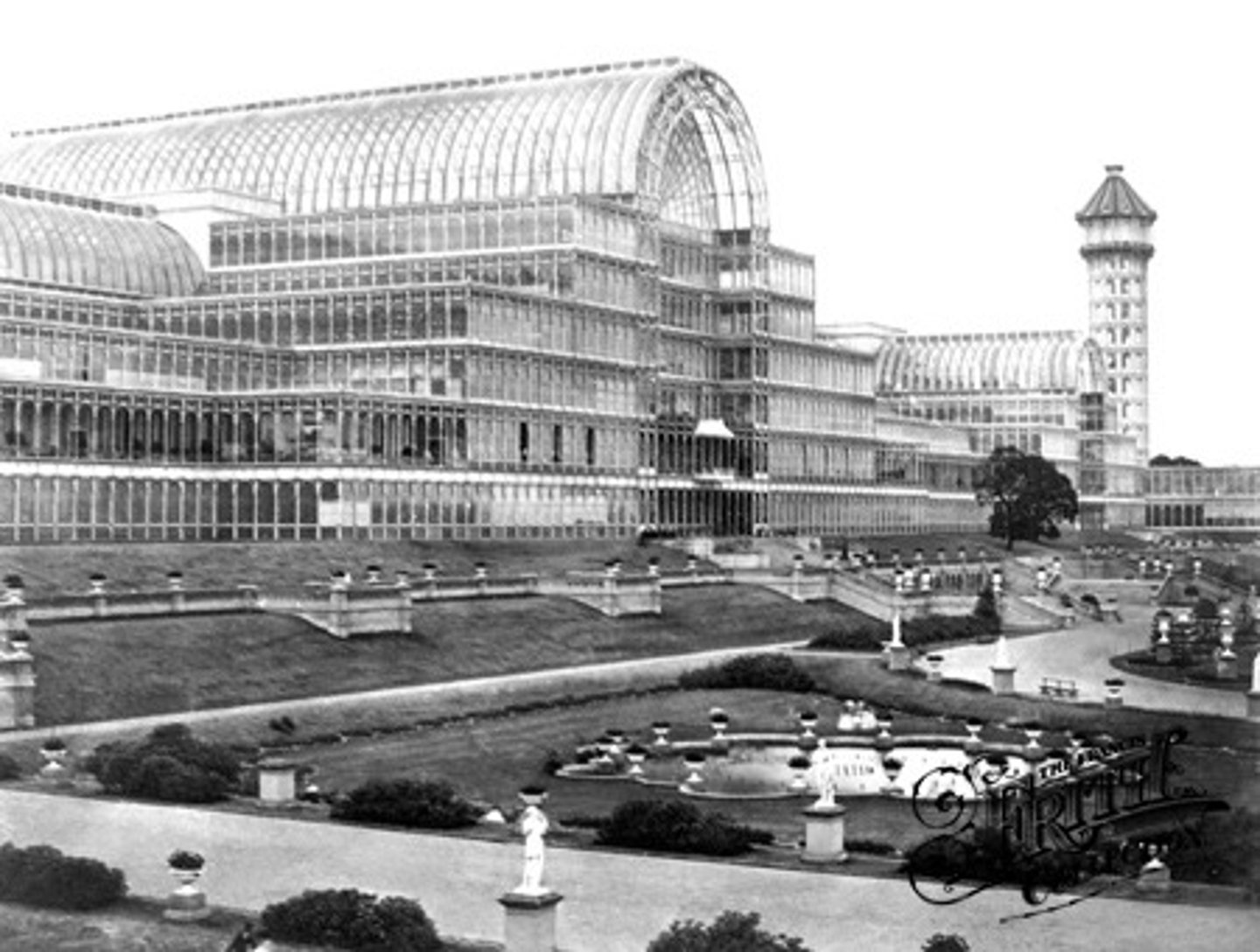
Art Nouveau
Originating in the decorative arts, it can be considered a stylistic development upon Arts and Crafts. It favored plant and animal forms found in nature, and building materials that could form sinuous structures and whiplash surface patterns. The resulting buildings look as if they grew, or were formed by some aberrant life form
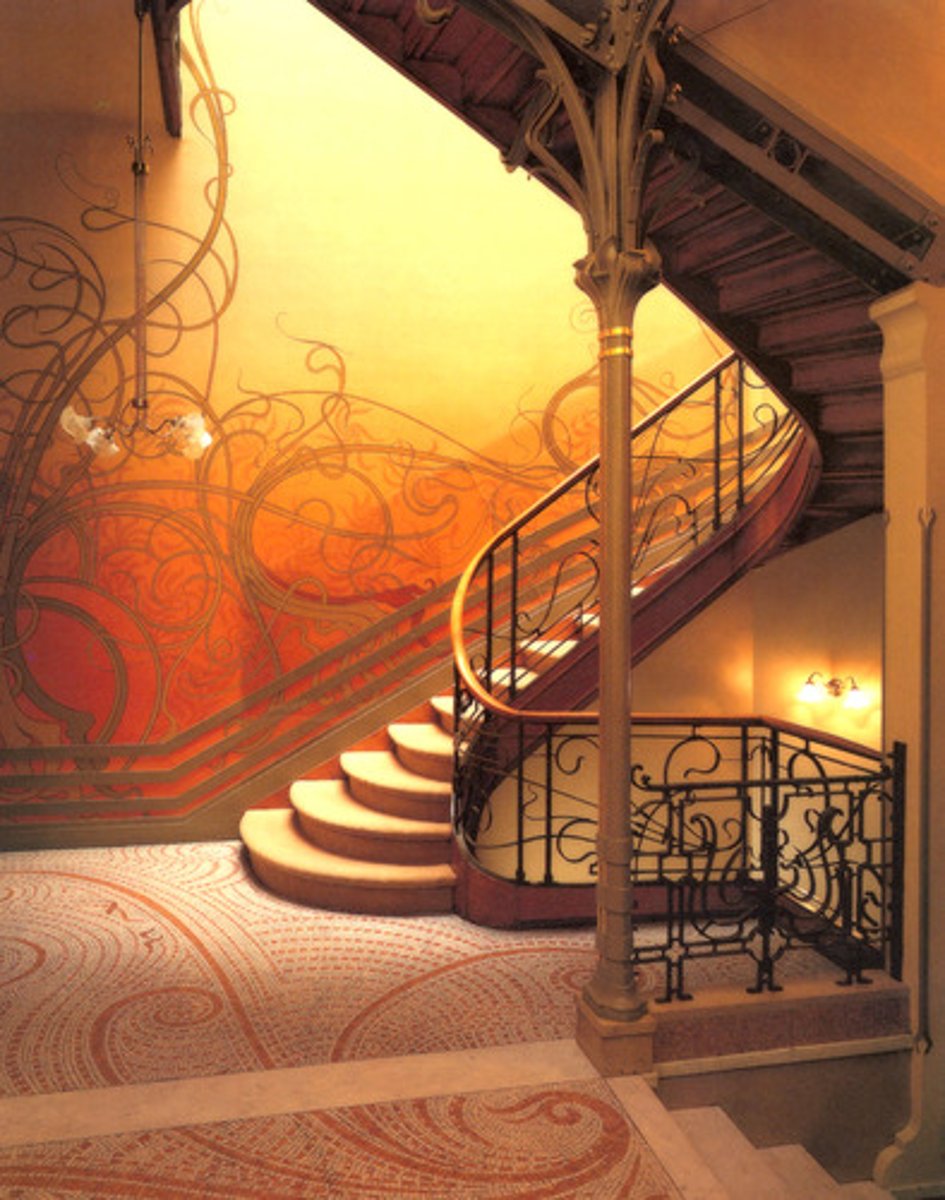
Charles Greene and Henry Greene : Gamble House, Pasadena (1900's)
Arts and Crafts
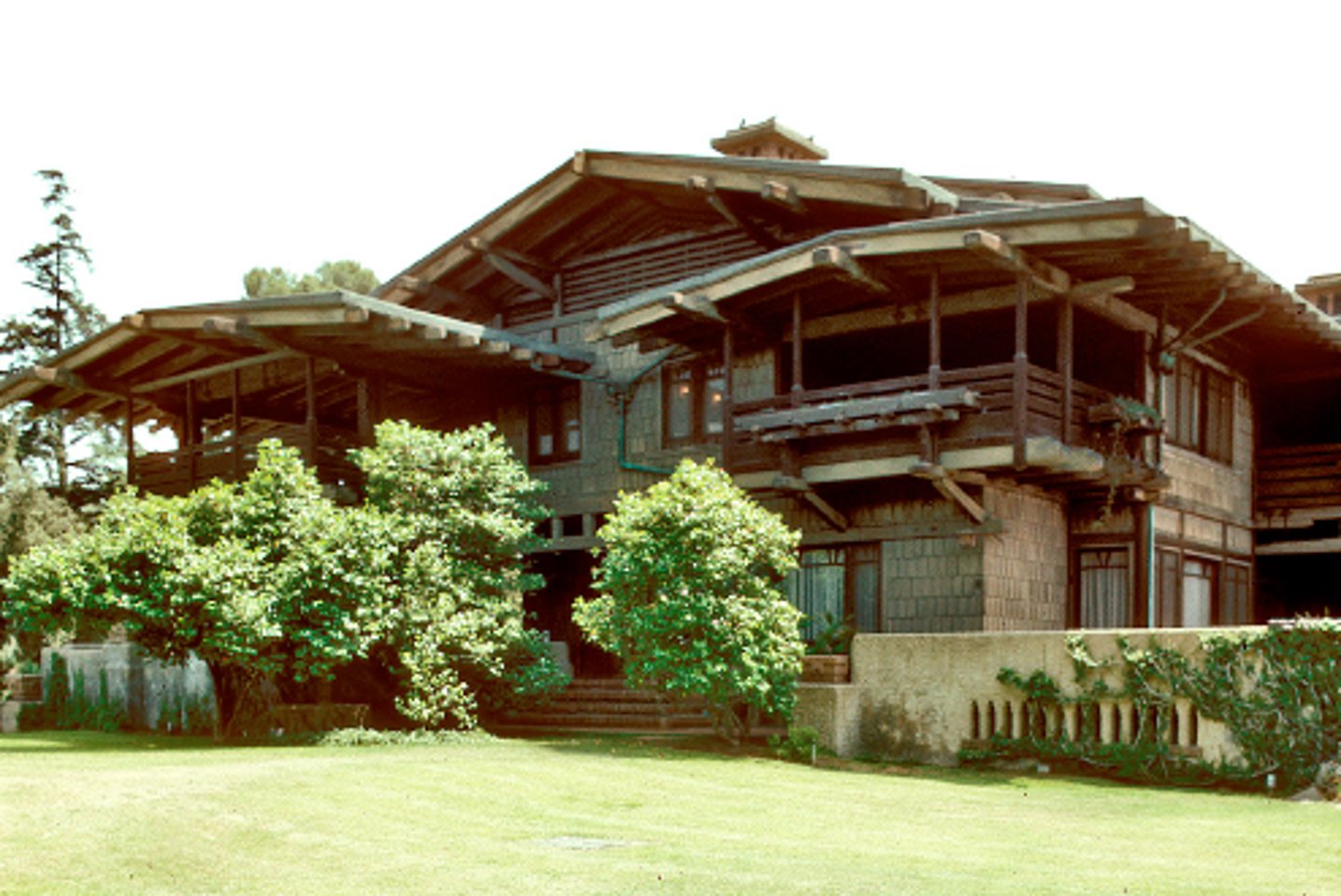
Charles Voysey, The Orchard, Charley Wood, Hertfordshire (Great Britain), 1900
Arts and Crafts
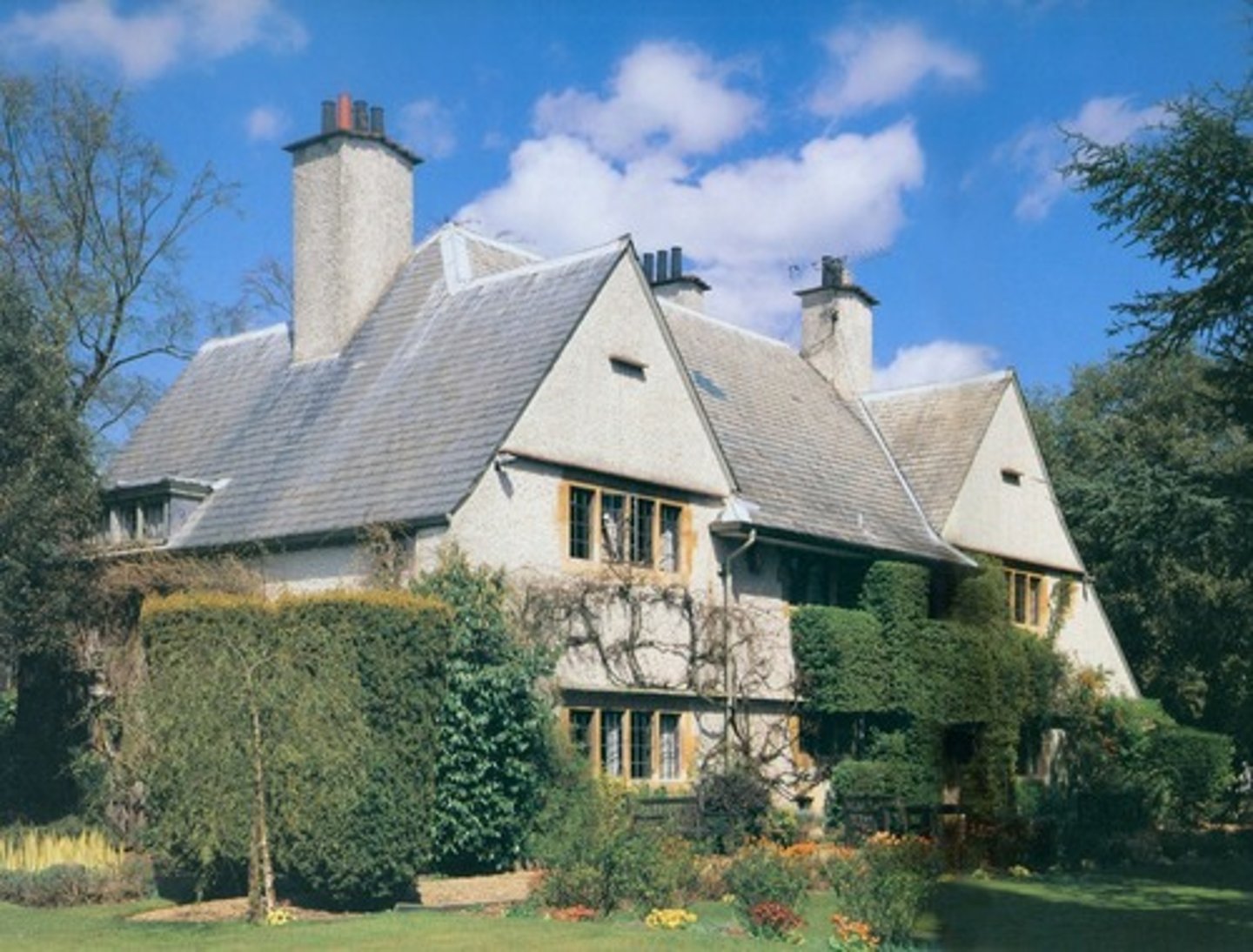
Victor Horta : Tassel House, Brussels (1890's)
Arts and Crafts

Hector Guimard - Metro Station, Paris, 1900
Arts and Crafts
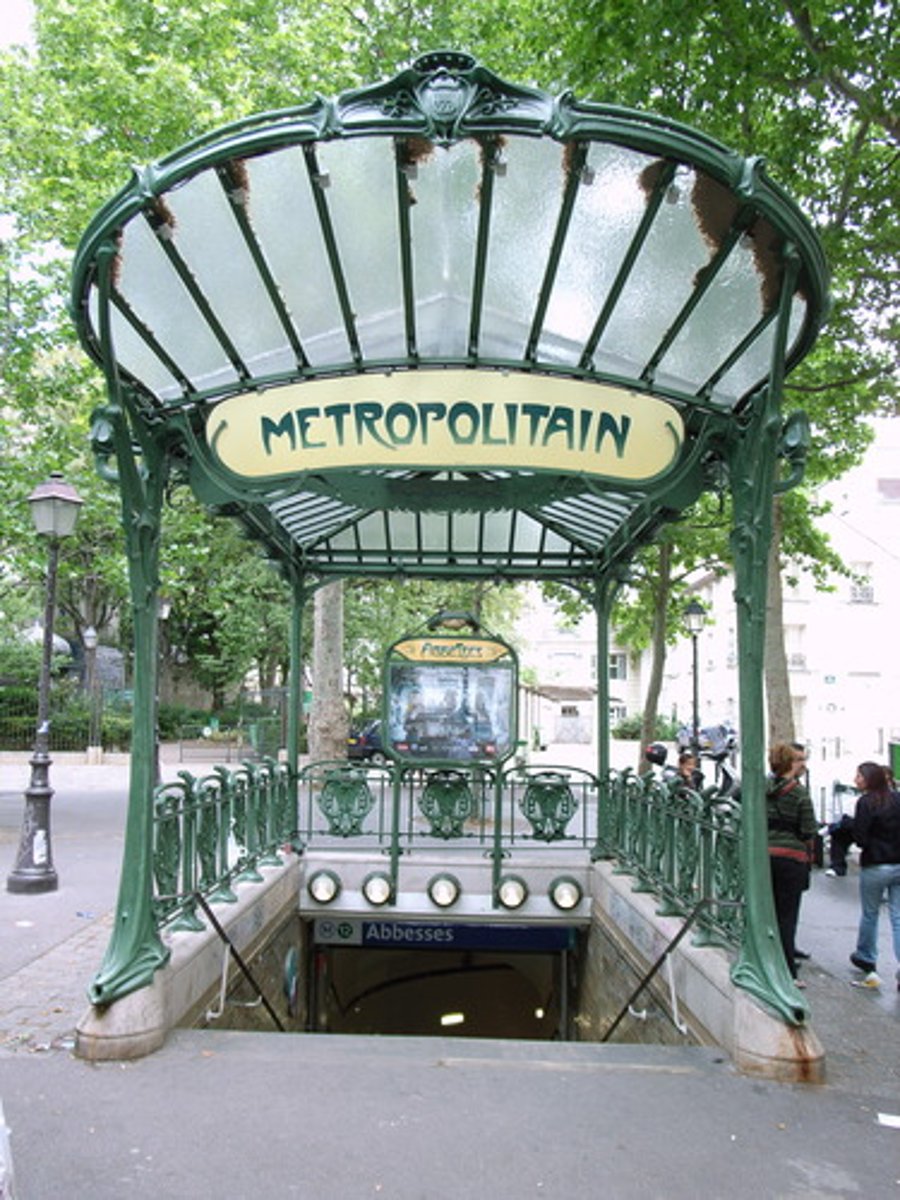
Charles Rennie Macintosh (1868 - 1928) Hill House, Helensburgh (1900's)
Arts and Crafts
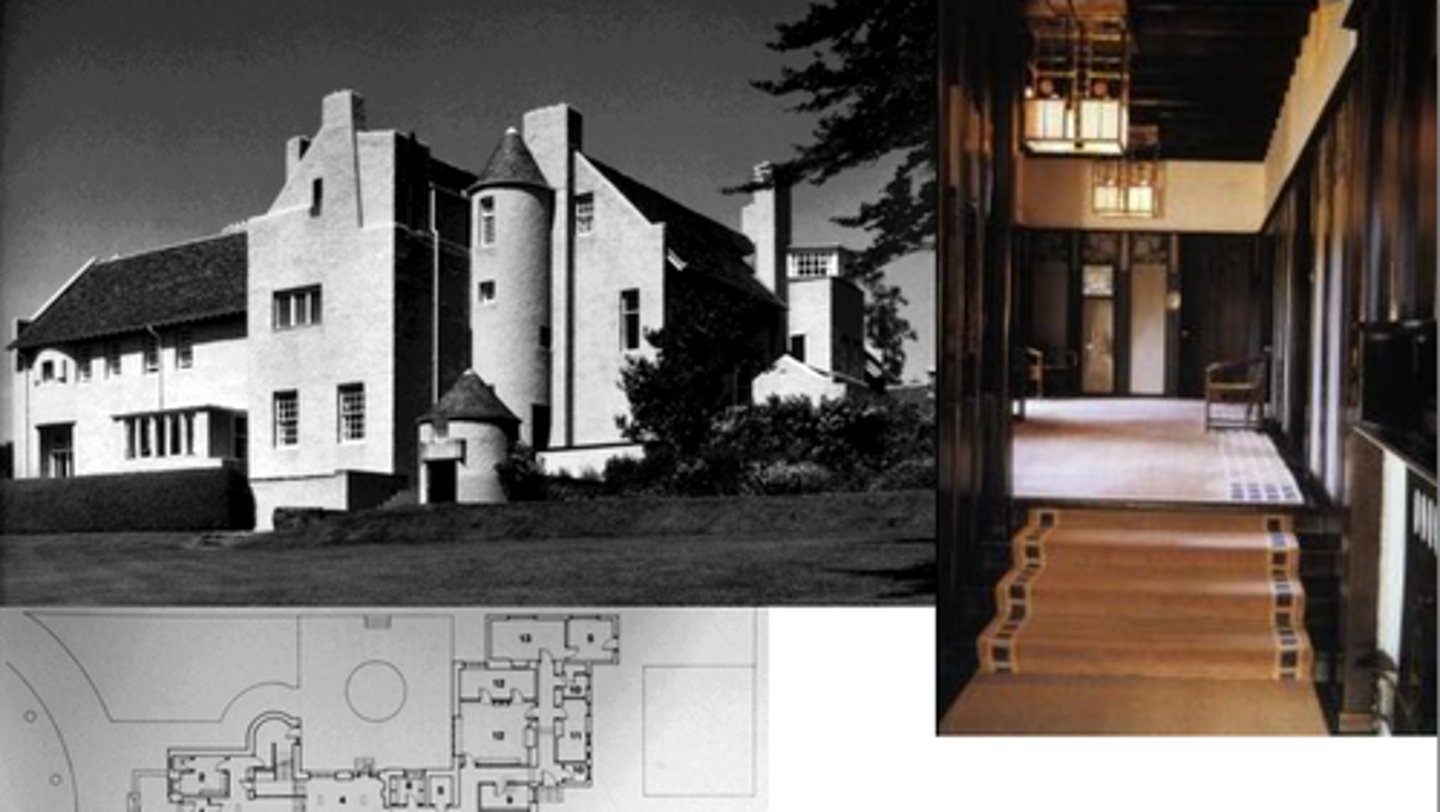
Charles Rennie Macintosh : Glasgow School of Art, Glasgow (1890's - 1900's)
Arts and Crafts
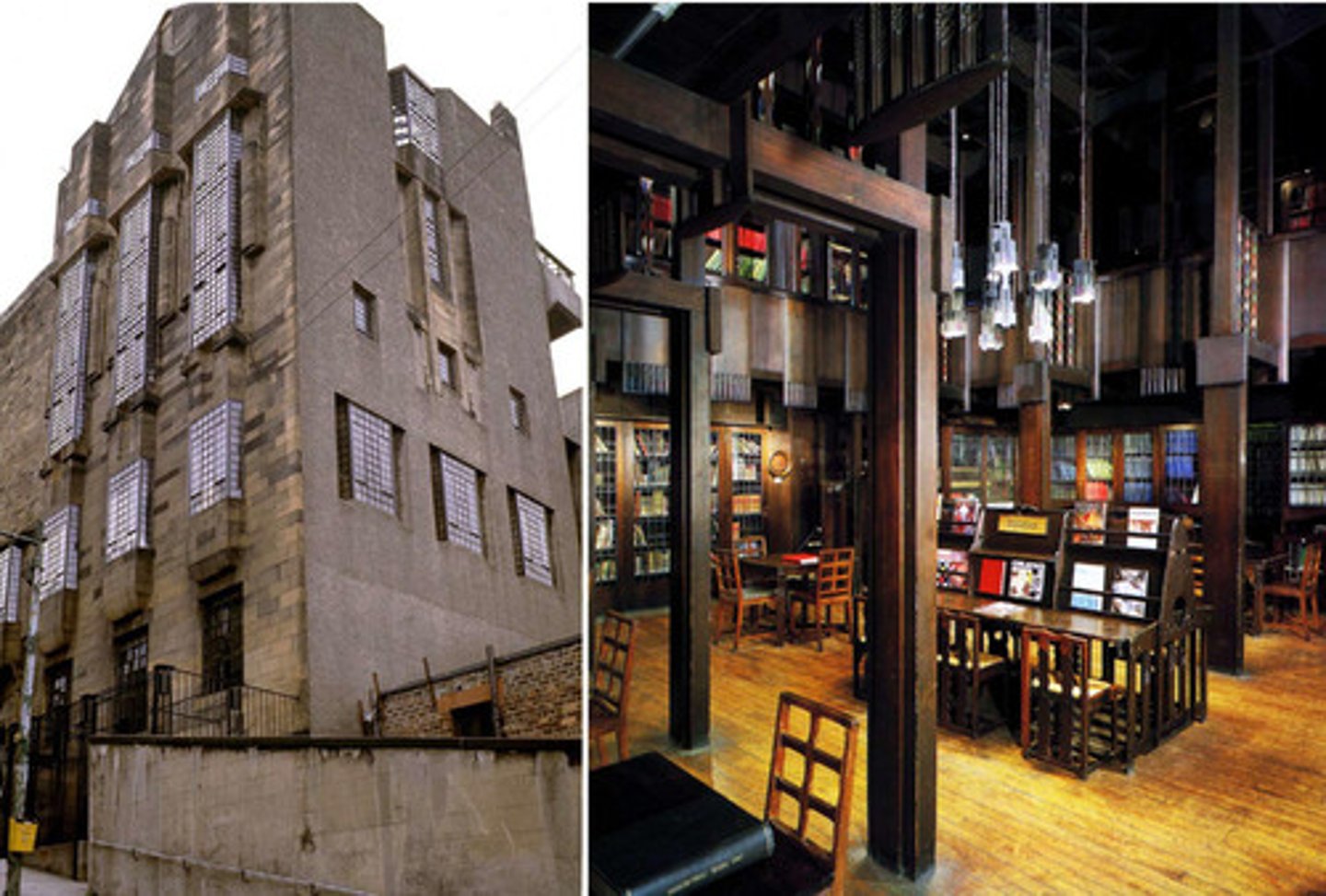
Antonio Gaudi, Casa Mila, Barcelona, 1907
Arts and Crafts / Art Nouveau
Antonio Gaudi : Sagrada Familia, Barcelona, Spain, 1882-present
Arts and Crafts
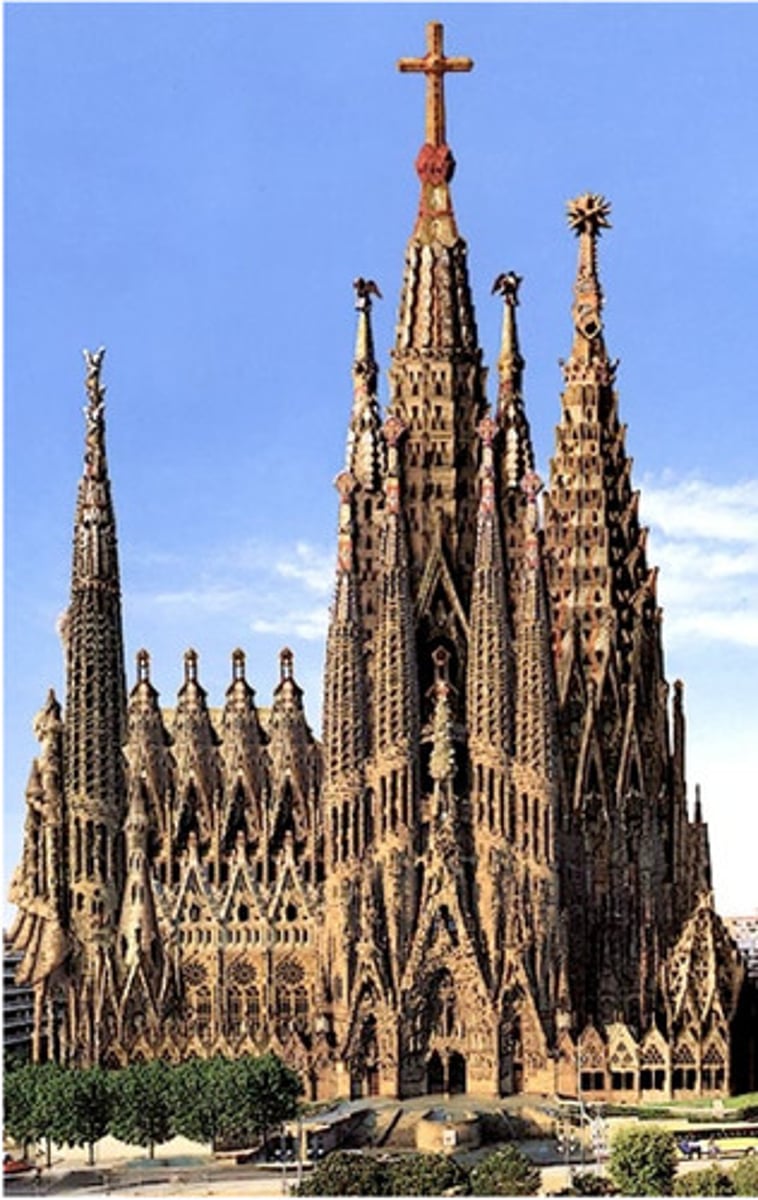
William Jenney 1st Leiter Building, Chicago, IL (1870's)
Arts and Crafts
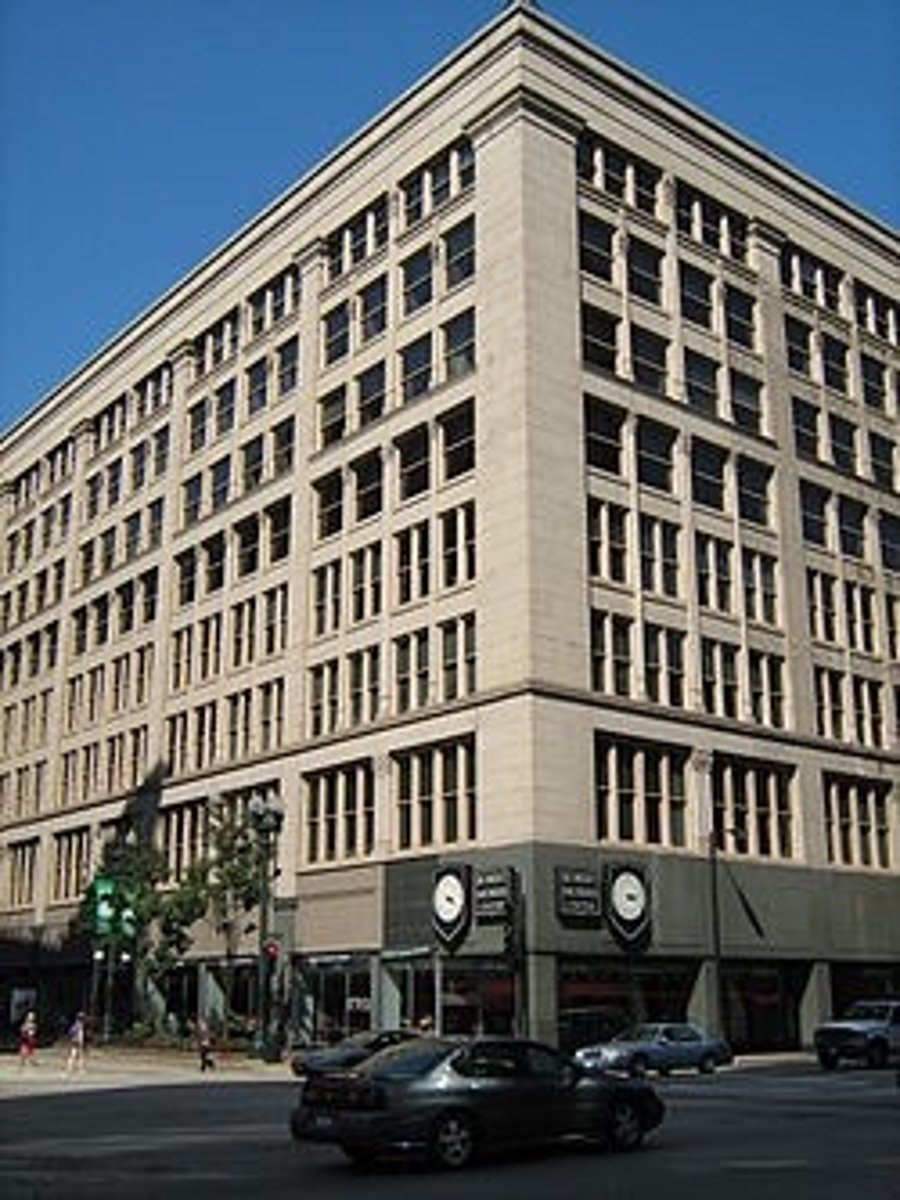
Henry H. Richardson : The Marshall Fields Wholesale Store, Chicago, IL (1880's)
Arts and Crafts
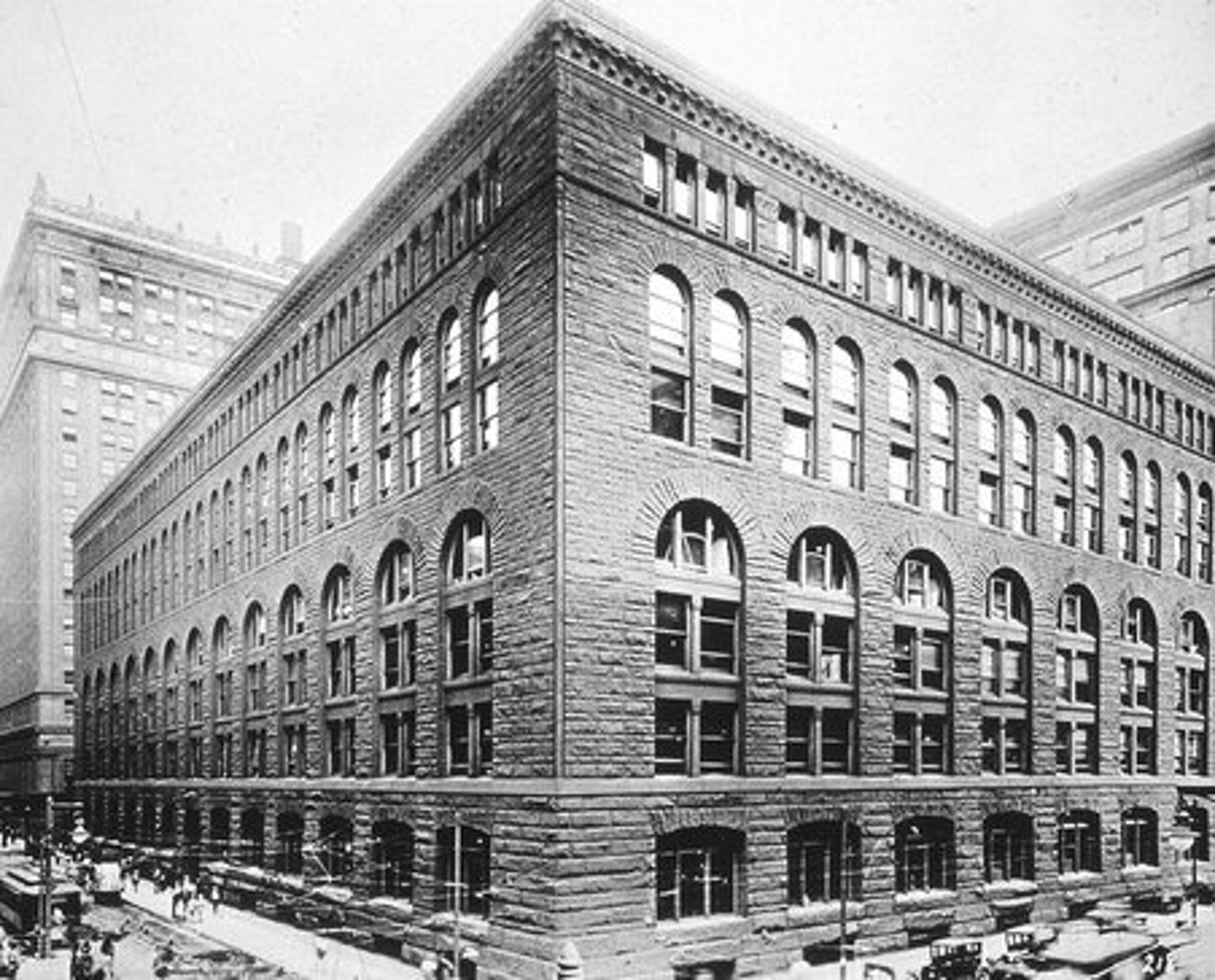
Louis Sullivan : The Auditorium Building (with Dankmar Adler), Chicago, IL (1880's)
Arts and Crafts
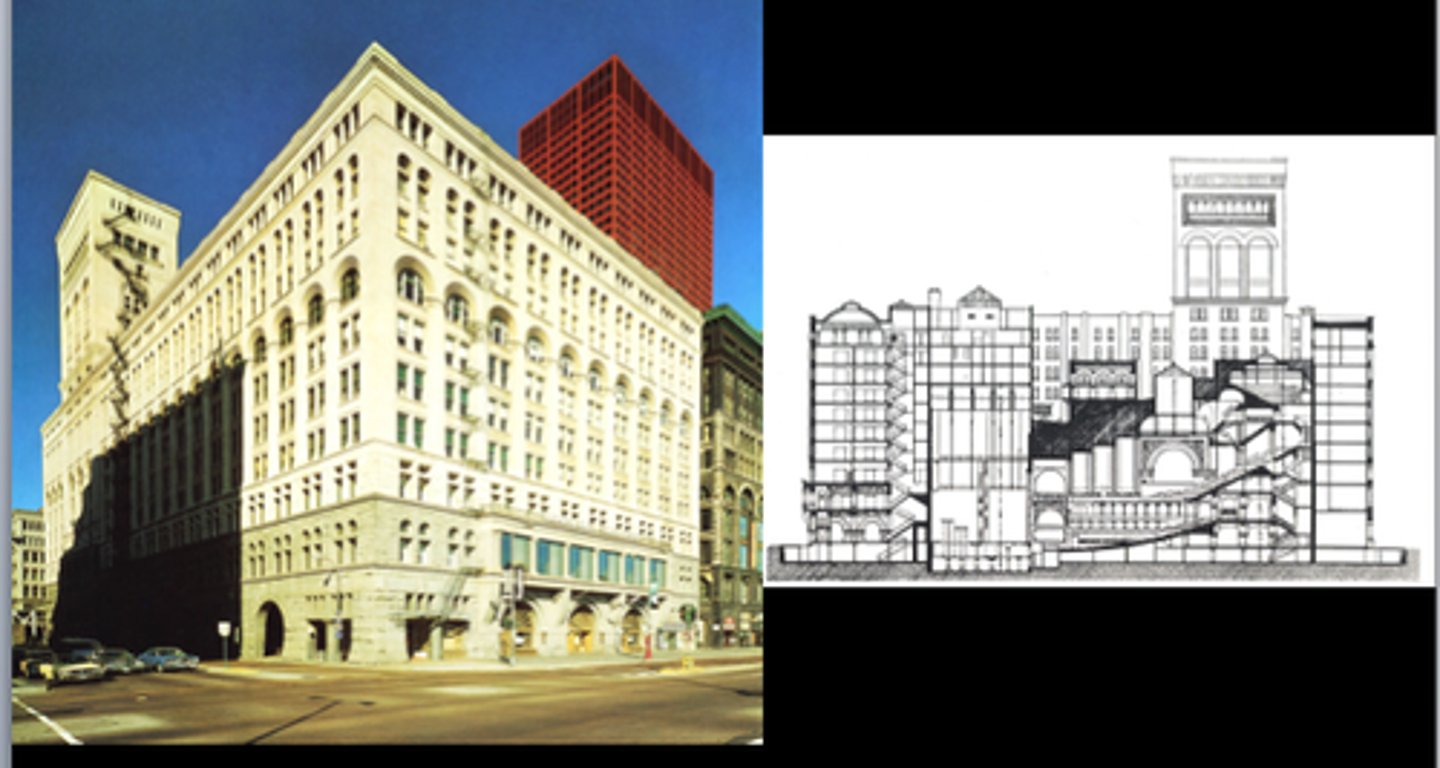
Louis Sullivan : National Farmers Bank, Owatonna, MN (1890)
Arts and Crafts
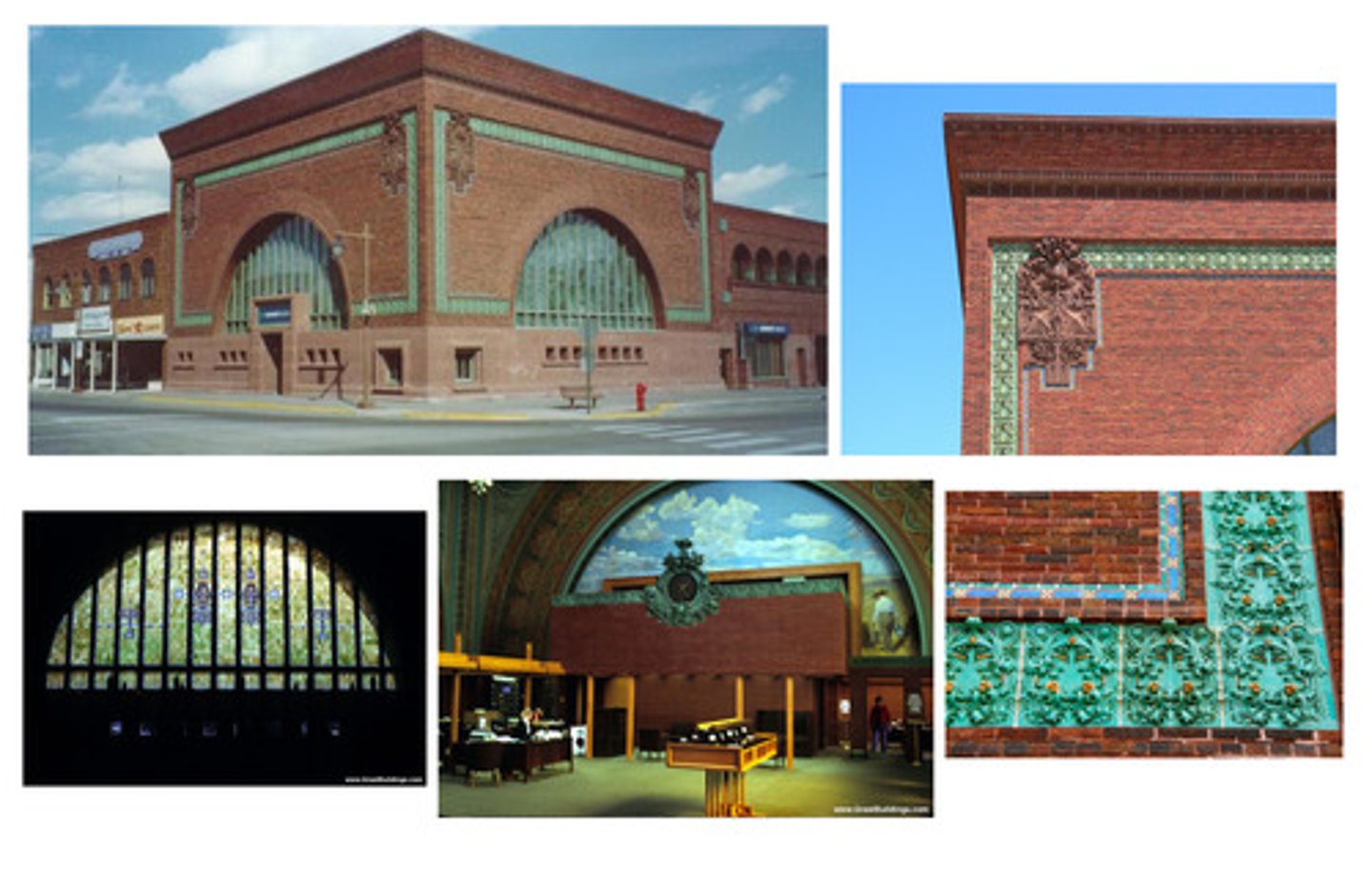
Louis Sullivan : The Wainwright Building, St. Louis, MO (1890's)

Frank Lloyd Wright : Winslow House, River Forest, IL (1890's)
Arts and Crafts
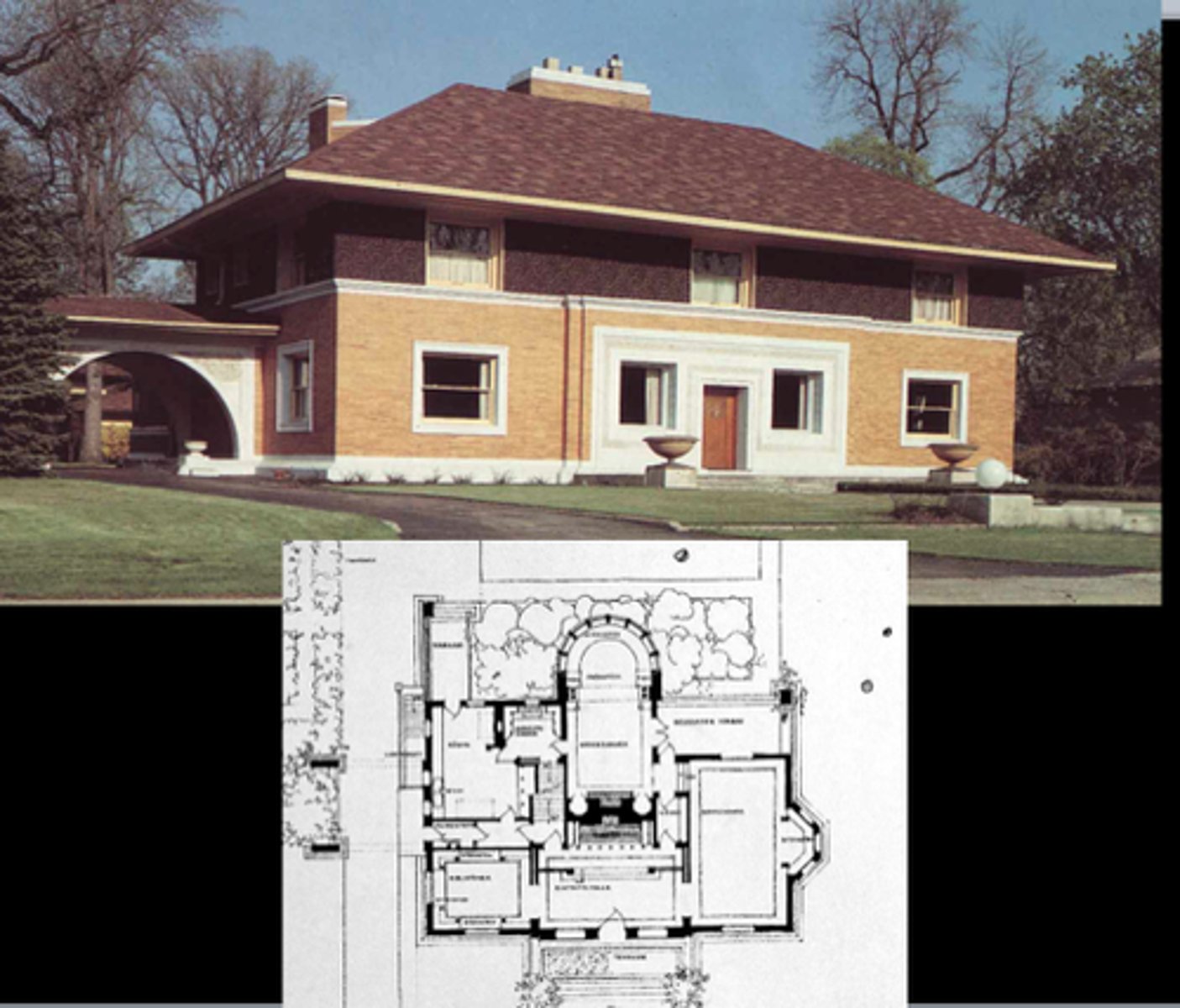
Frank Lloyd Wright : Unity Temple, Oak Park, IL (1900's)
Arts and Crafts
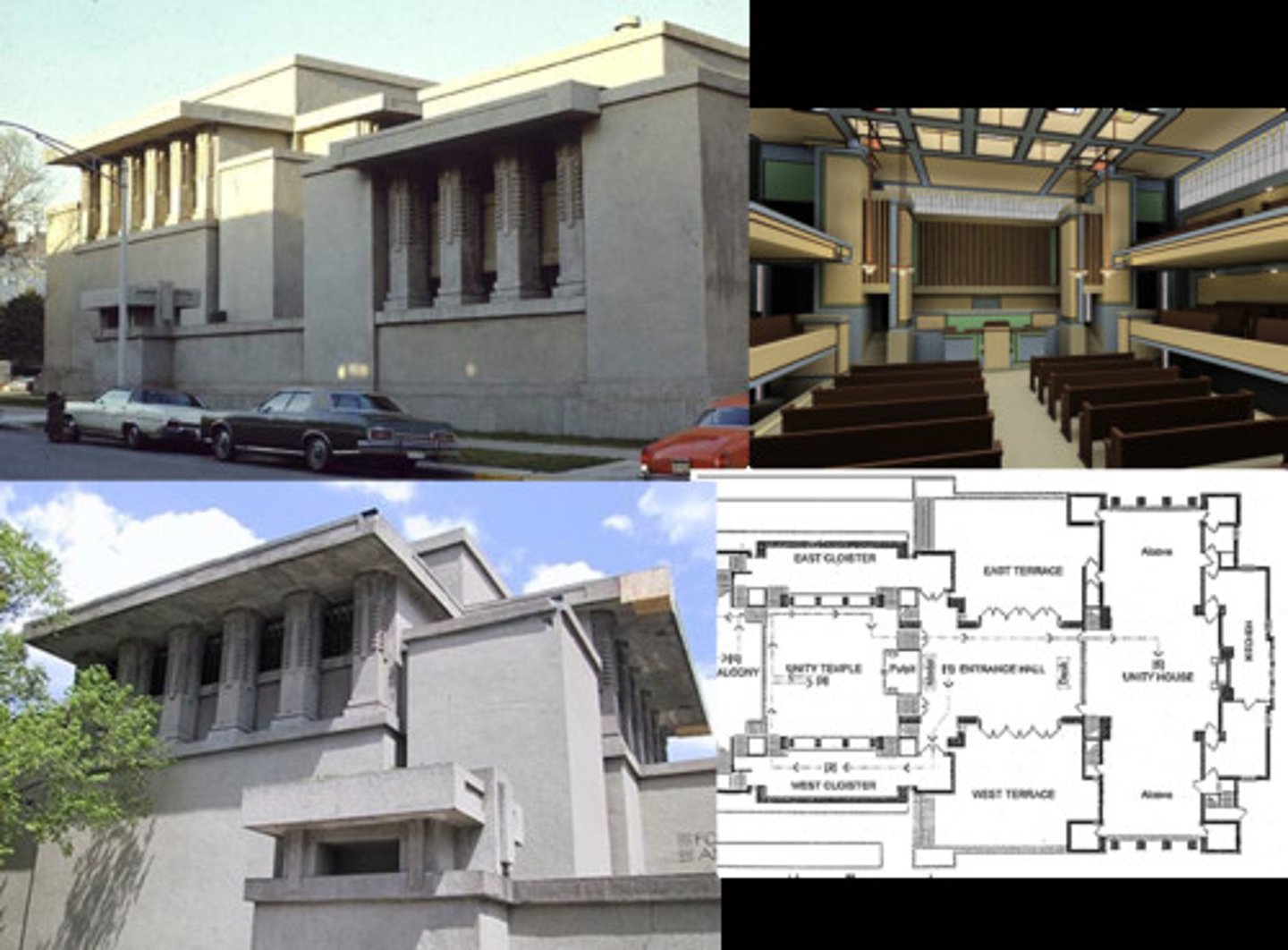
Frank Lloyd Wright : Robie House, Chicago, IL (1900's)
Arts and Crafts
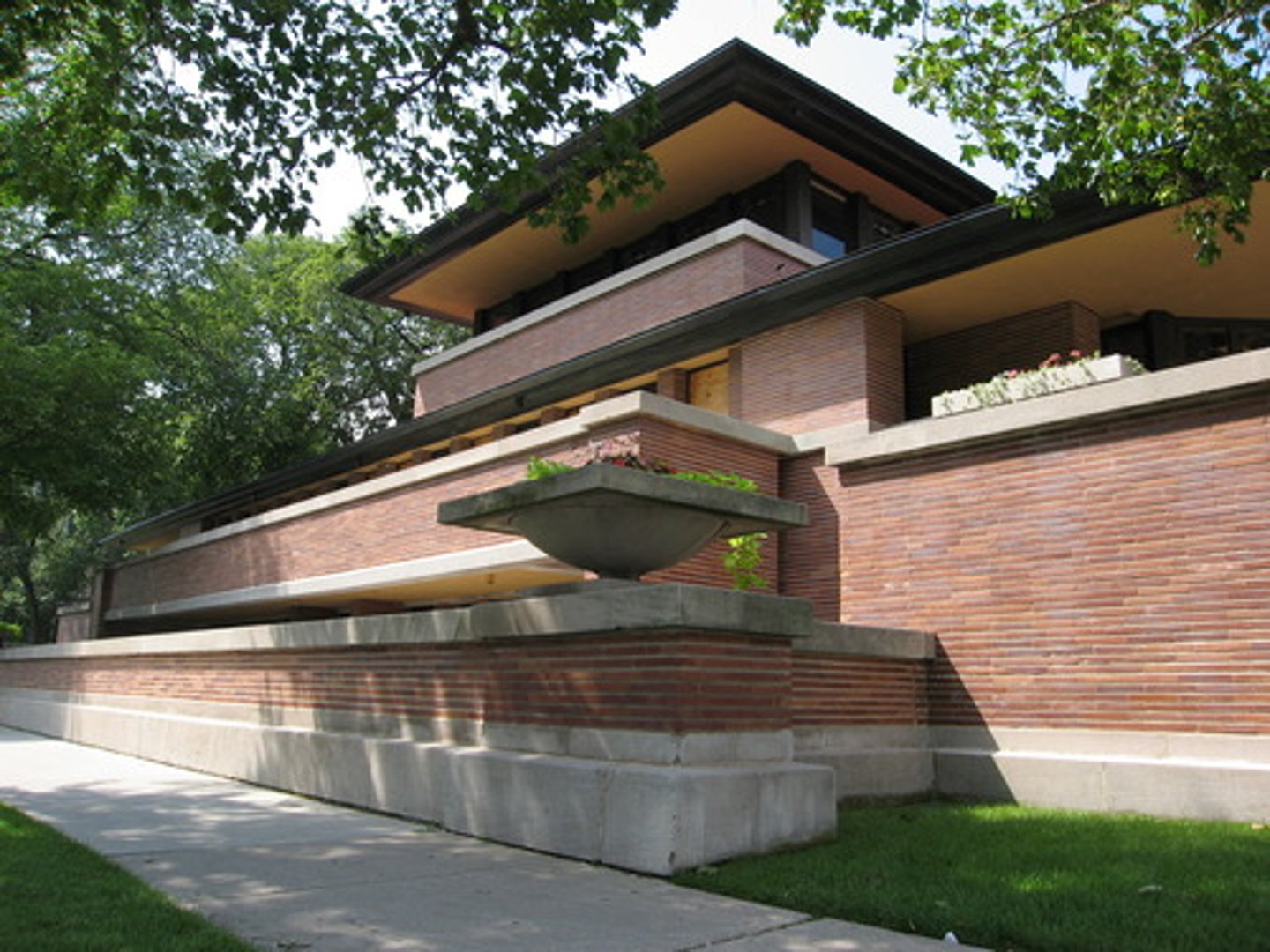
Frank Lloyd Wright : Willits House, Highland Park, IL (1900's)
Arts and Crafts
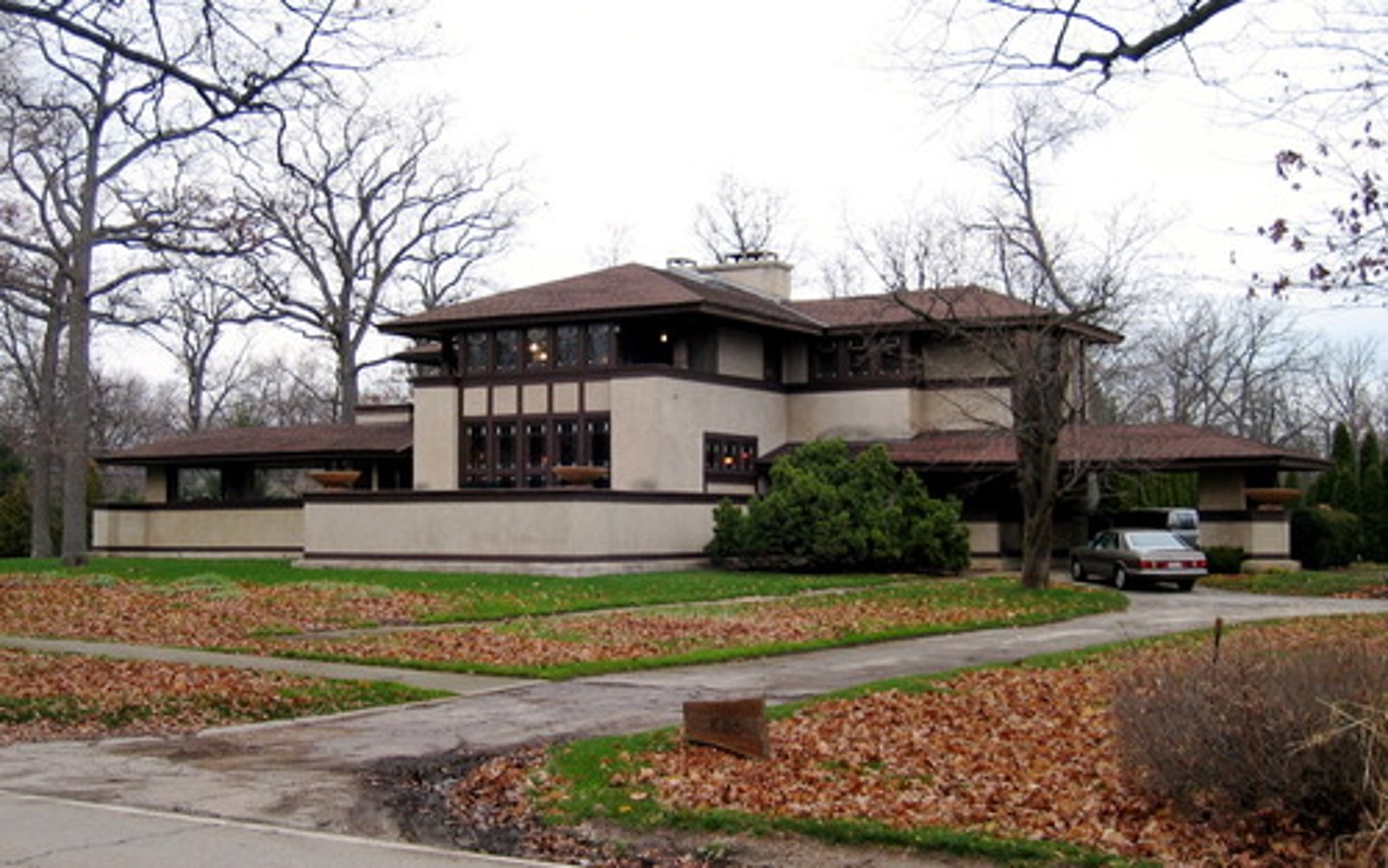
Columbian world Exhibition
Classicism
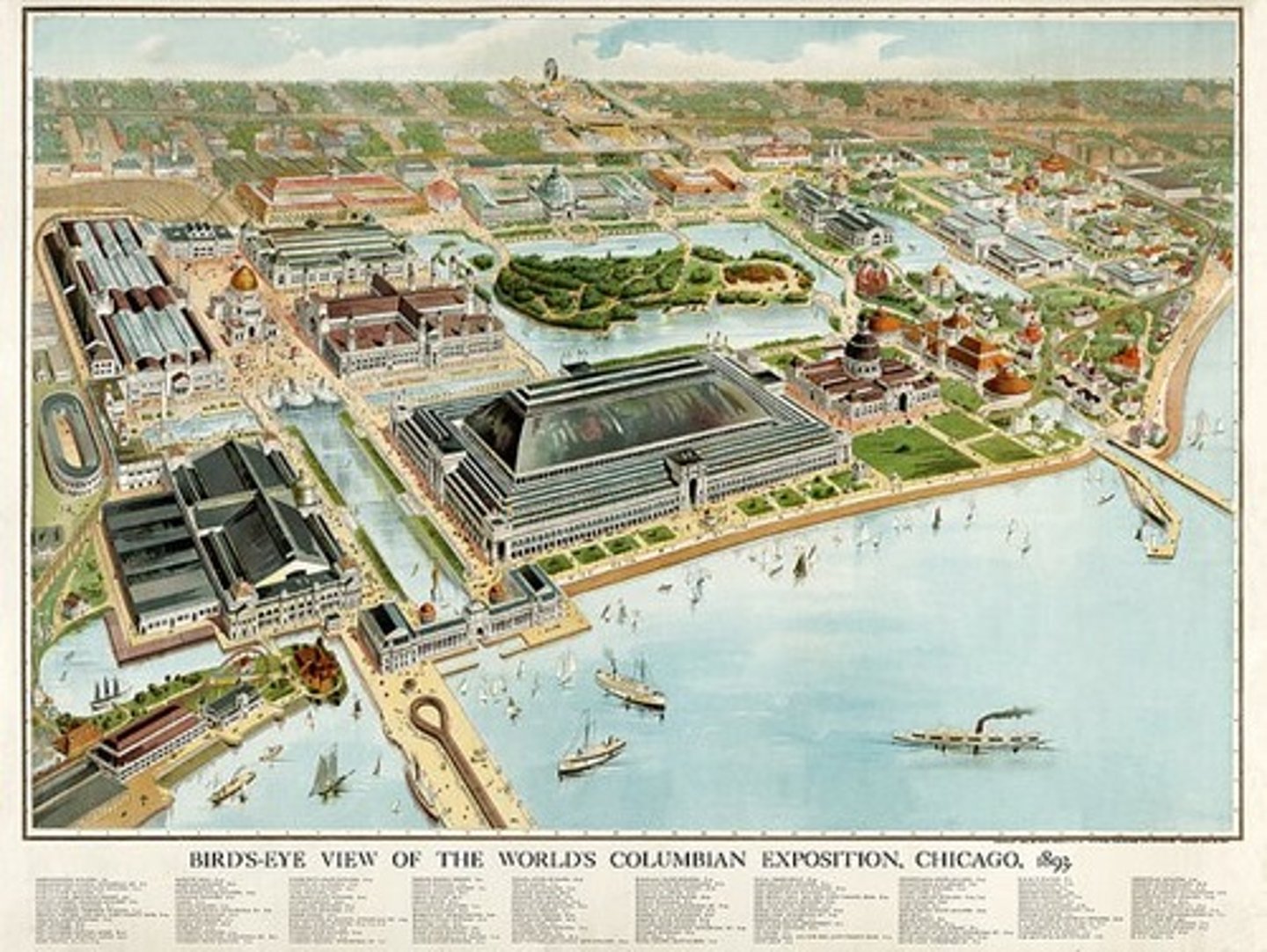
Richard Morris Hunt: Administration Building
Classicism

OTTO WAGNER: Postal savings bank, Vienna, 1904-1906
Classicism
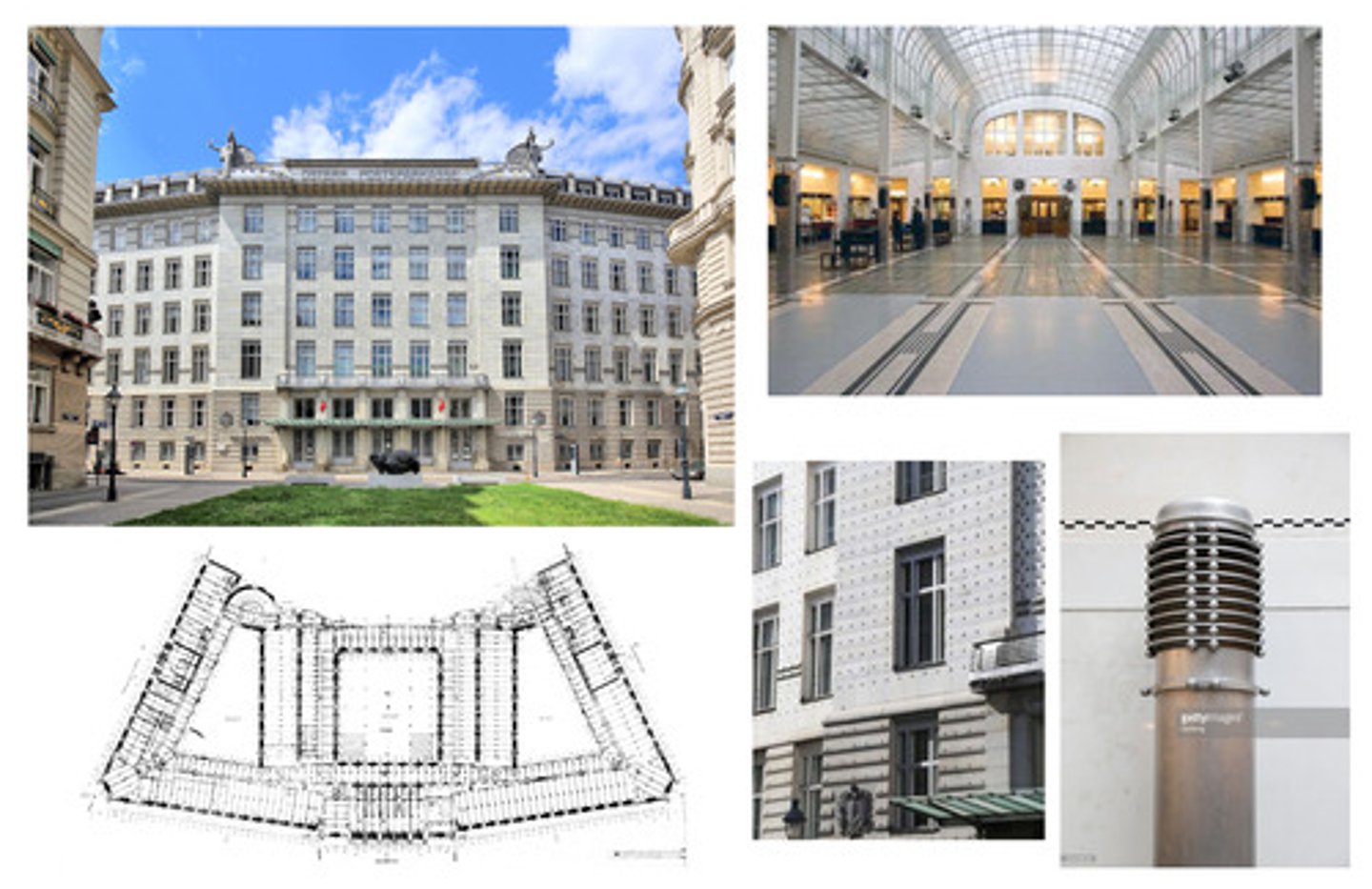
Joseph Maria Olbrich, Vienna Secession Building, 1897
Classicism
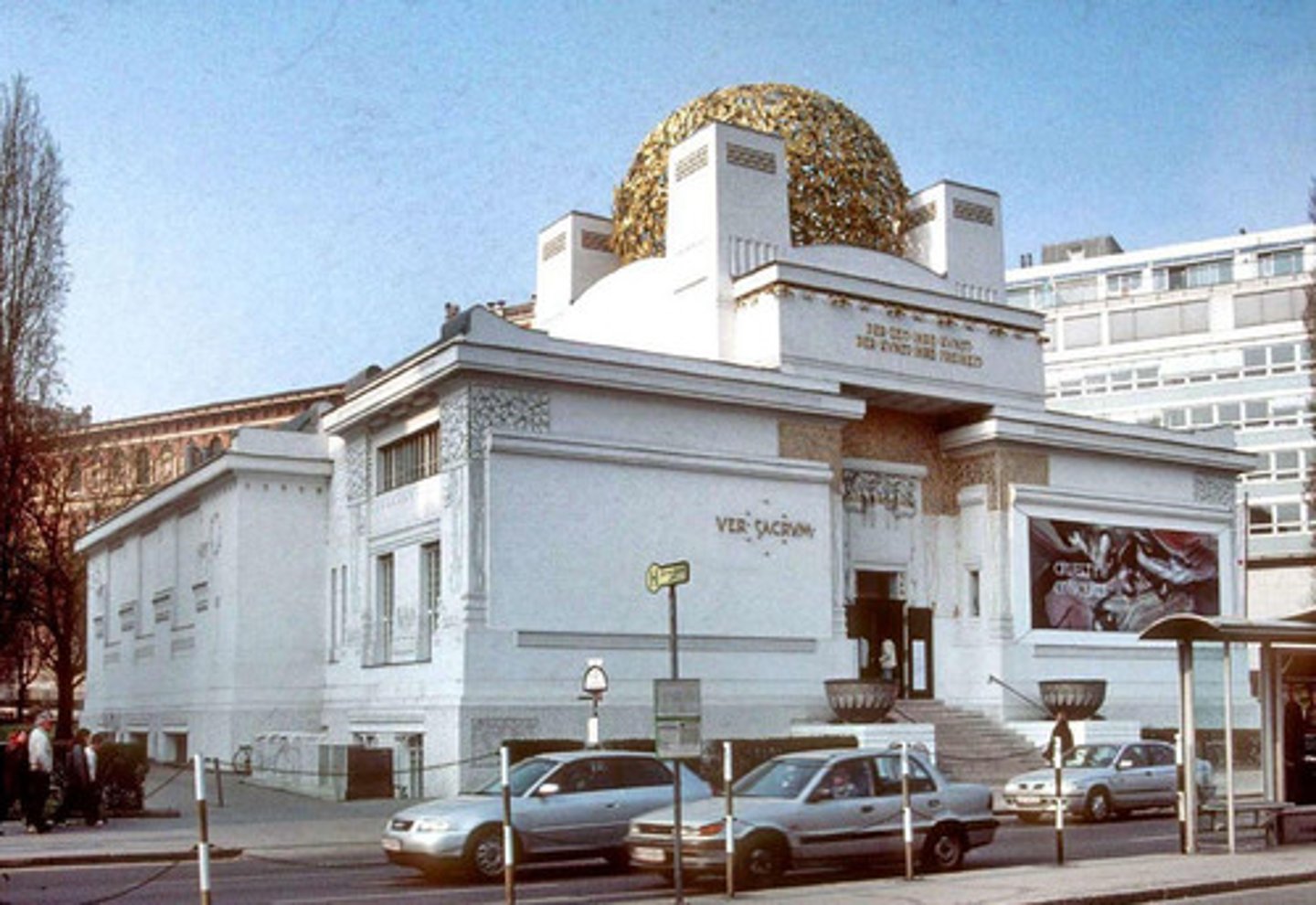
Adolf Loos, Steiner House, Vienna, 1910
Classicism
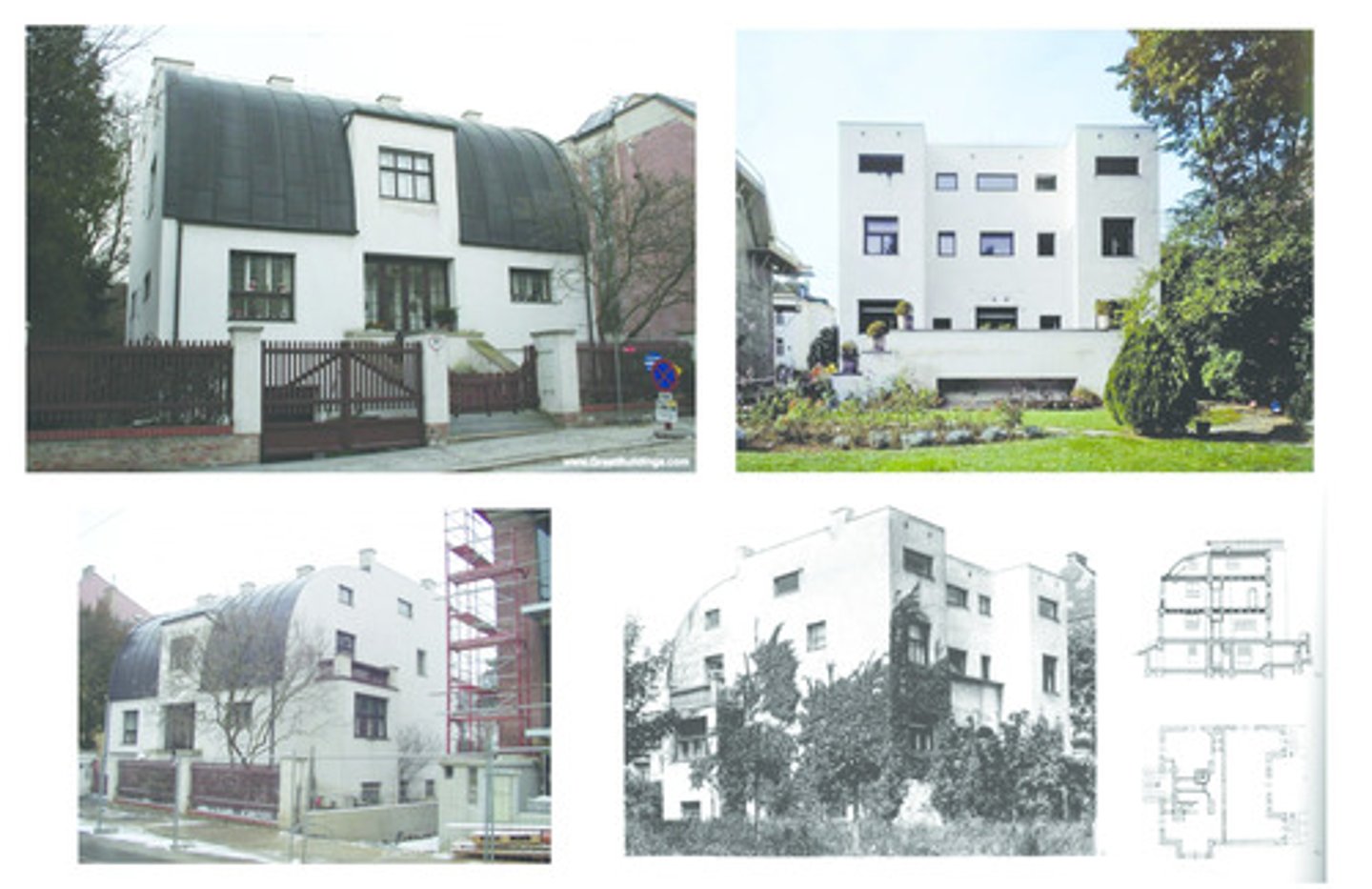
August Perret's : Apartment on Rue Franklin, Paris (1900's)
Classicism
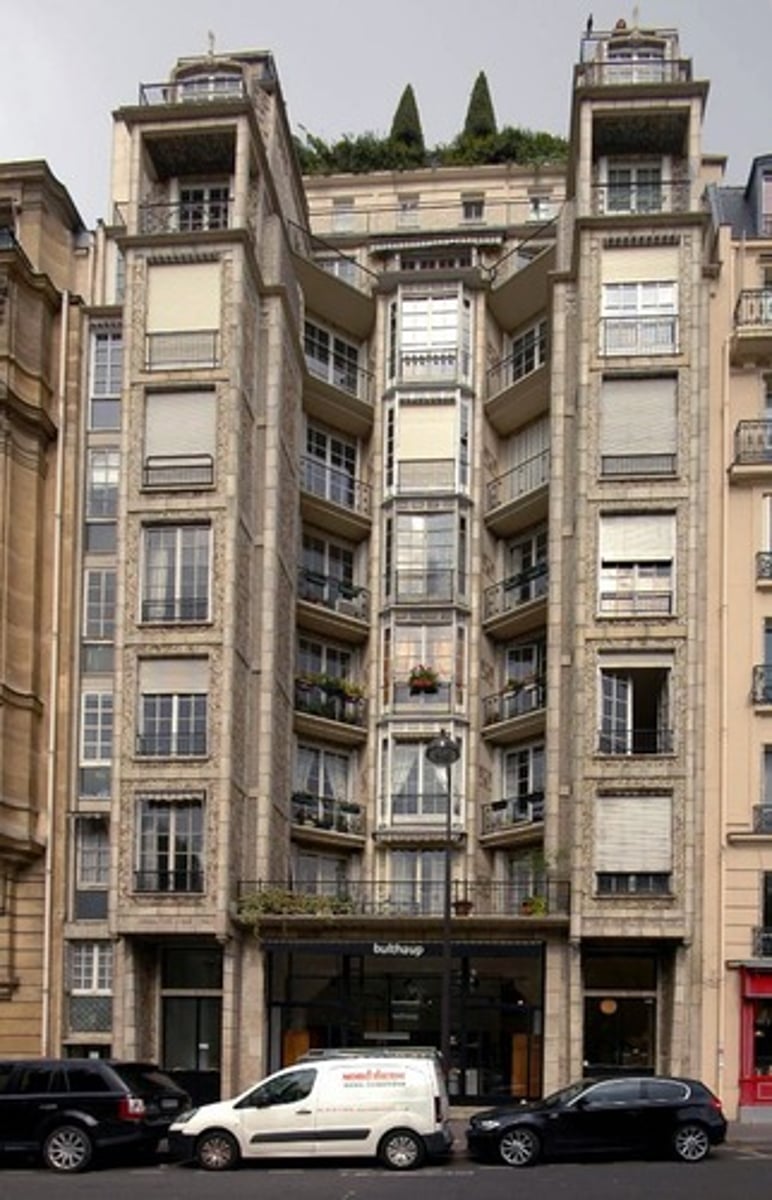
August Perret : Notre Dame de Raincy, Le Raincy
Classicism

Bertram Goodhue, Nebraska State Capitol, Lincoln, NE (1922-32)
Classicism
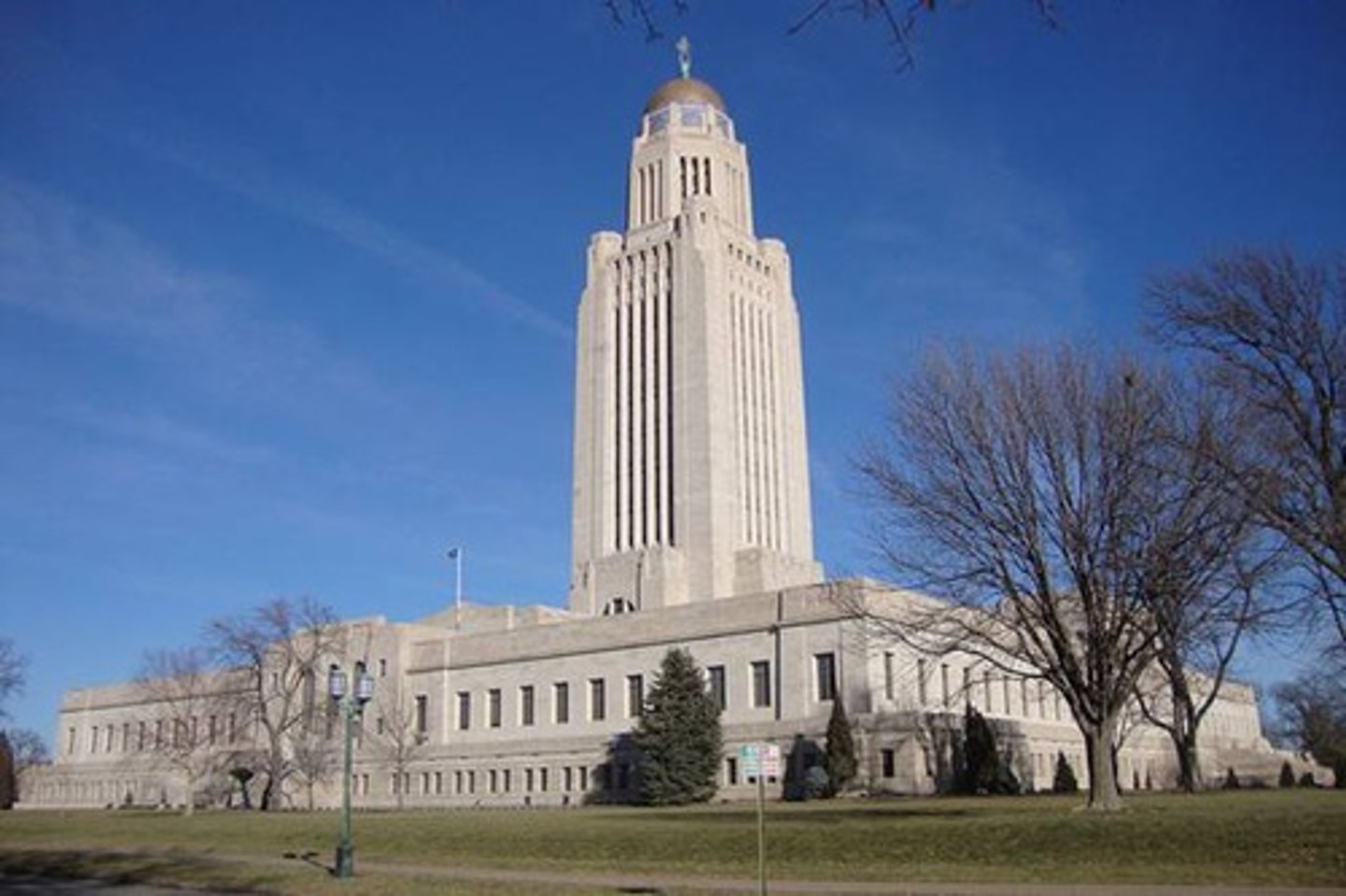
Erik Asplund : Stockholm Public Library, Stockholm, Sweden
Classicism
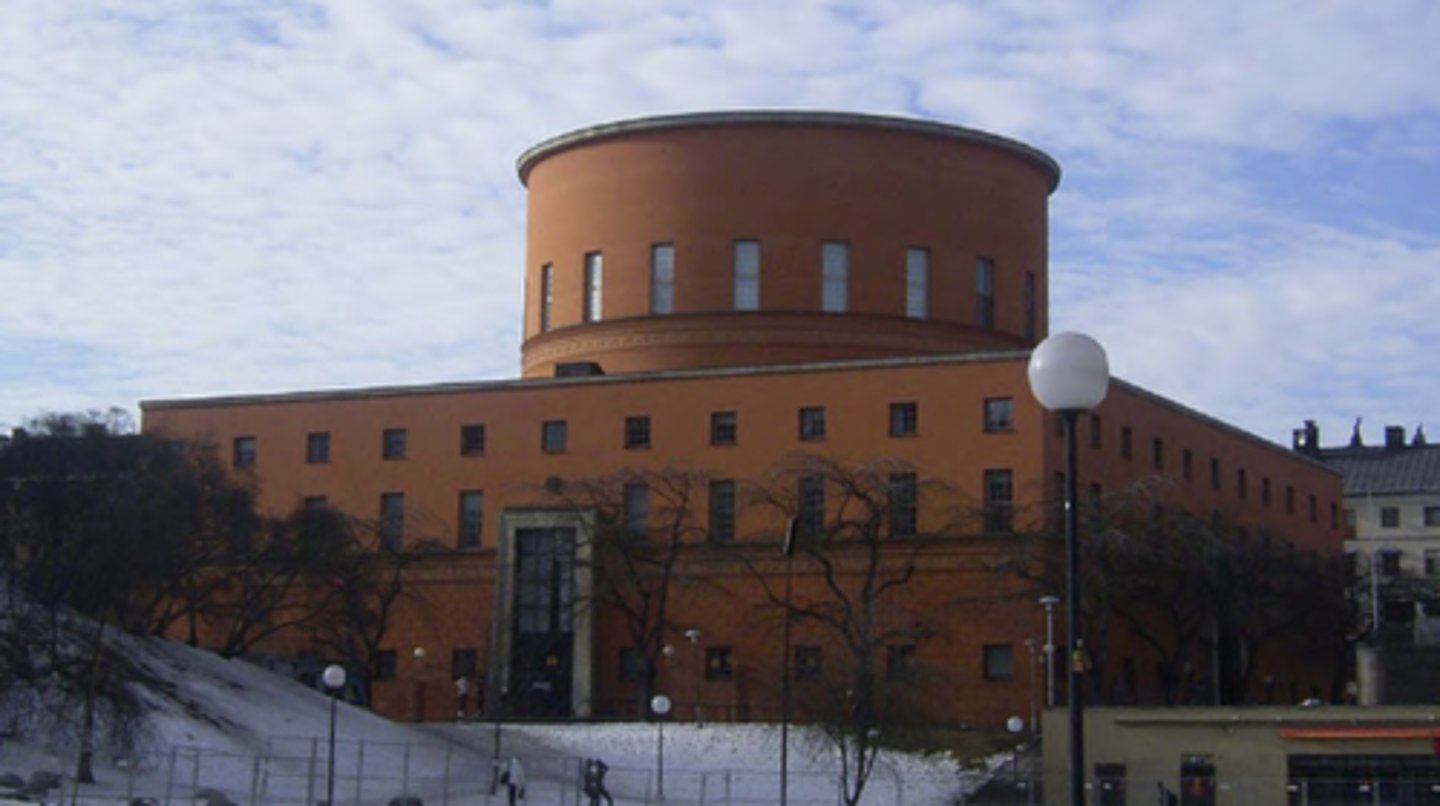
Gustave Eiffel : Eiffel Tower, 1889 (1889 Exposition, Paris)
Rationalism
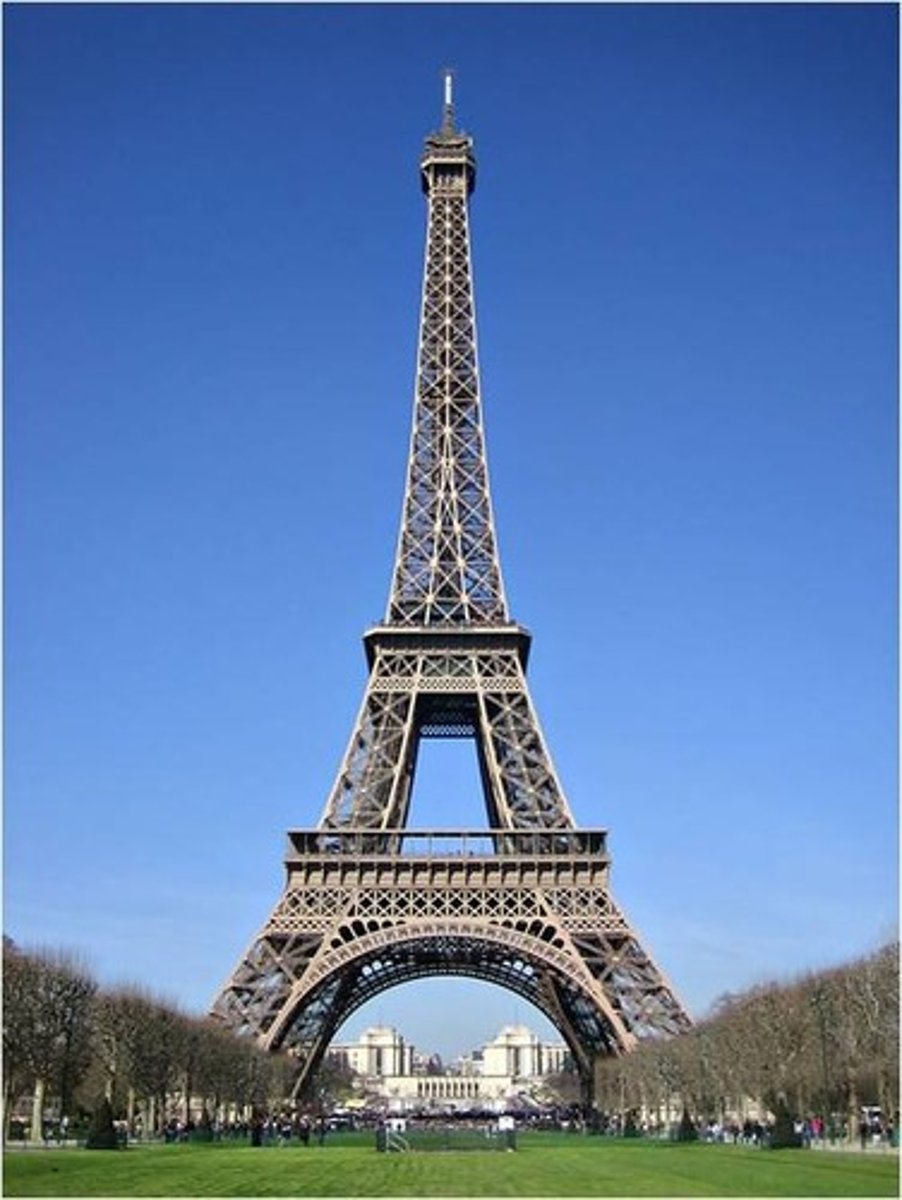
Peter Berhens : AEG Turbine Factory, Berlin (1900's)
Rationalism
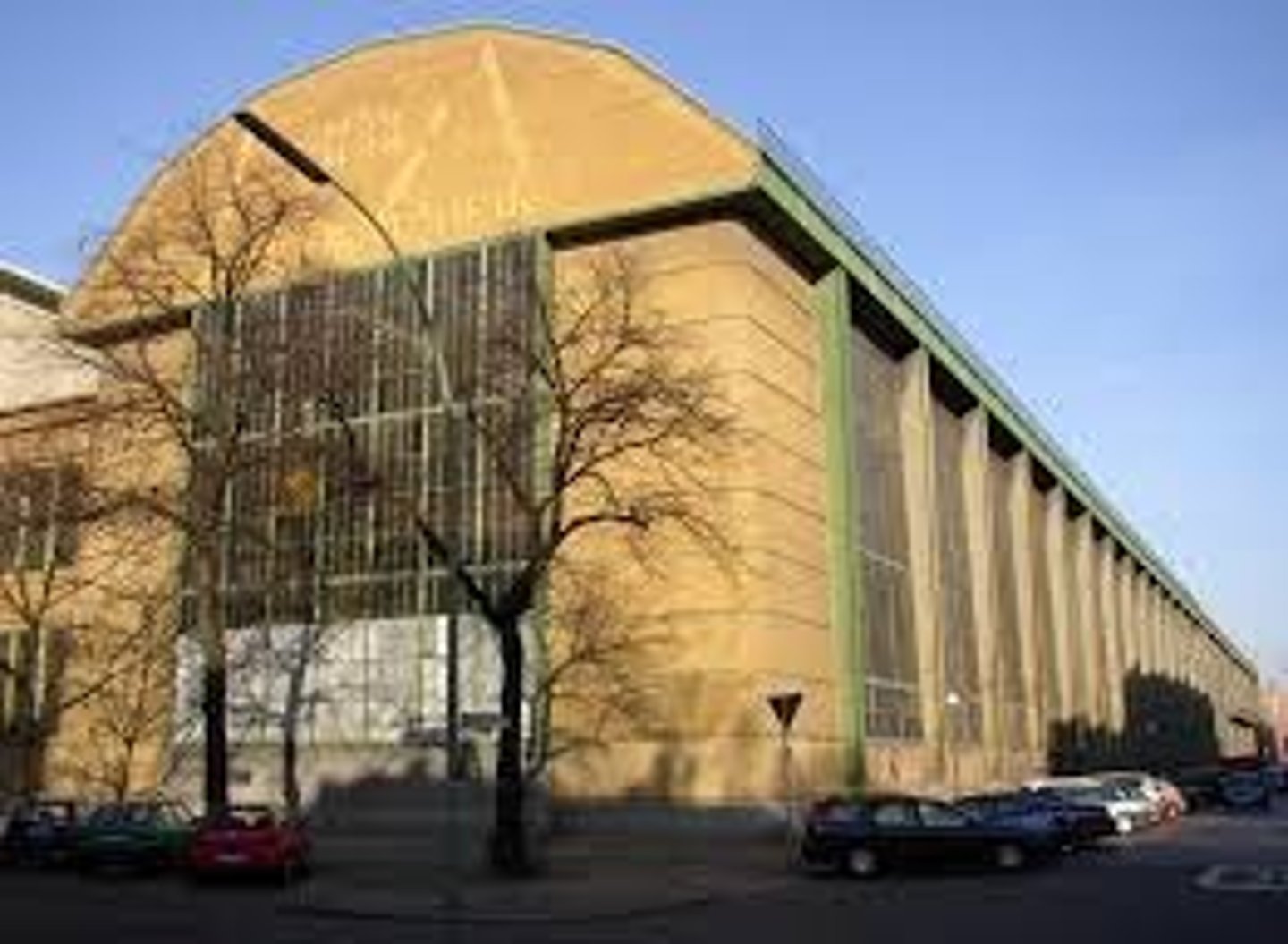
Contamin & Dutert: Galerie des Machines (1889)
Rationalism
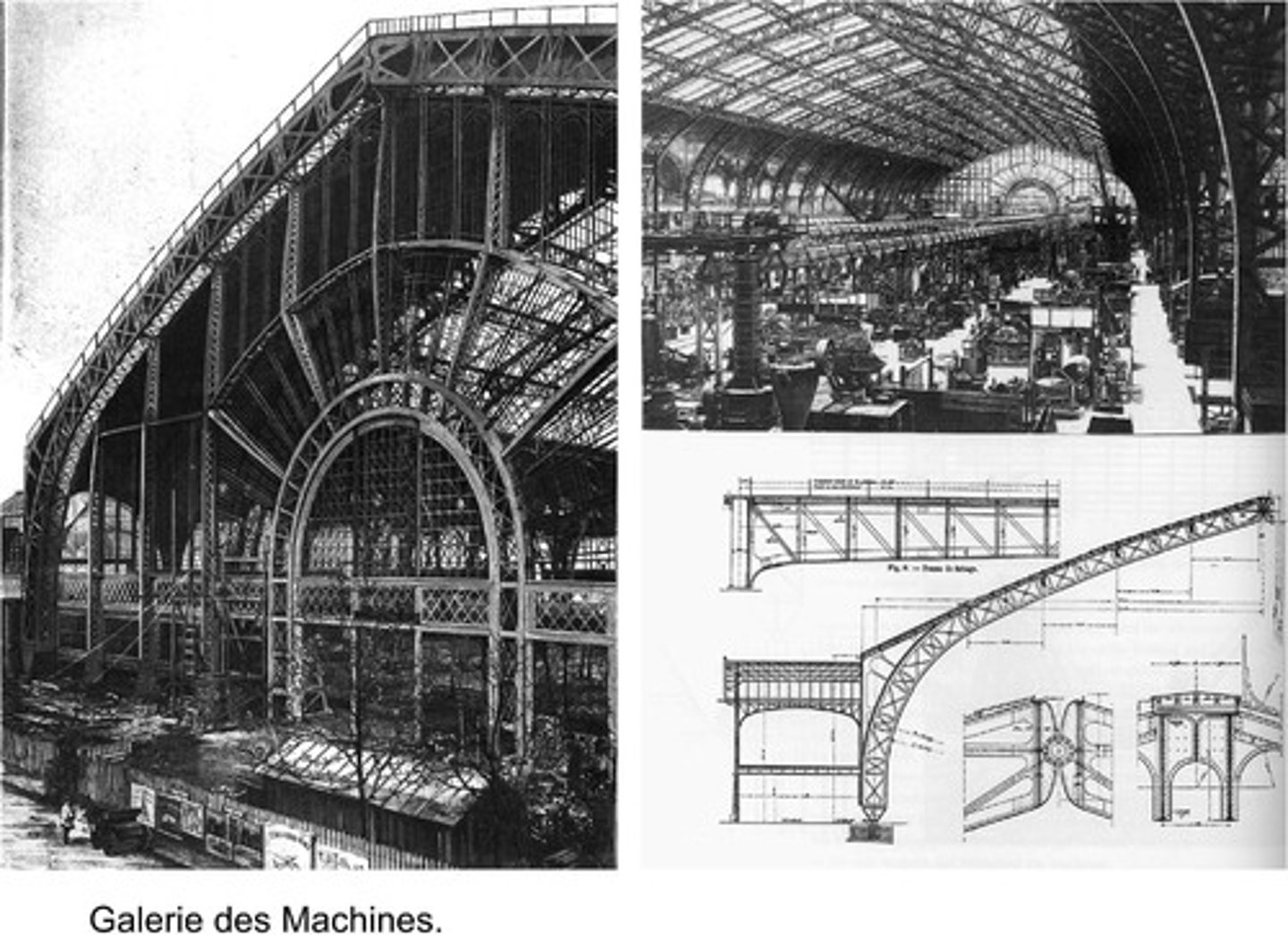
Walter Gropius and Adolf Meyer : Werkbund Paavillion, Cologne (1910's)
Rationalism
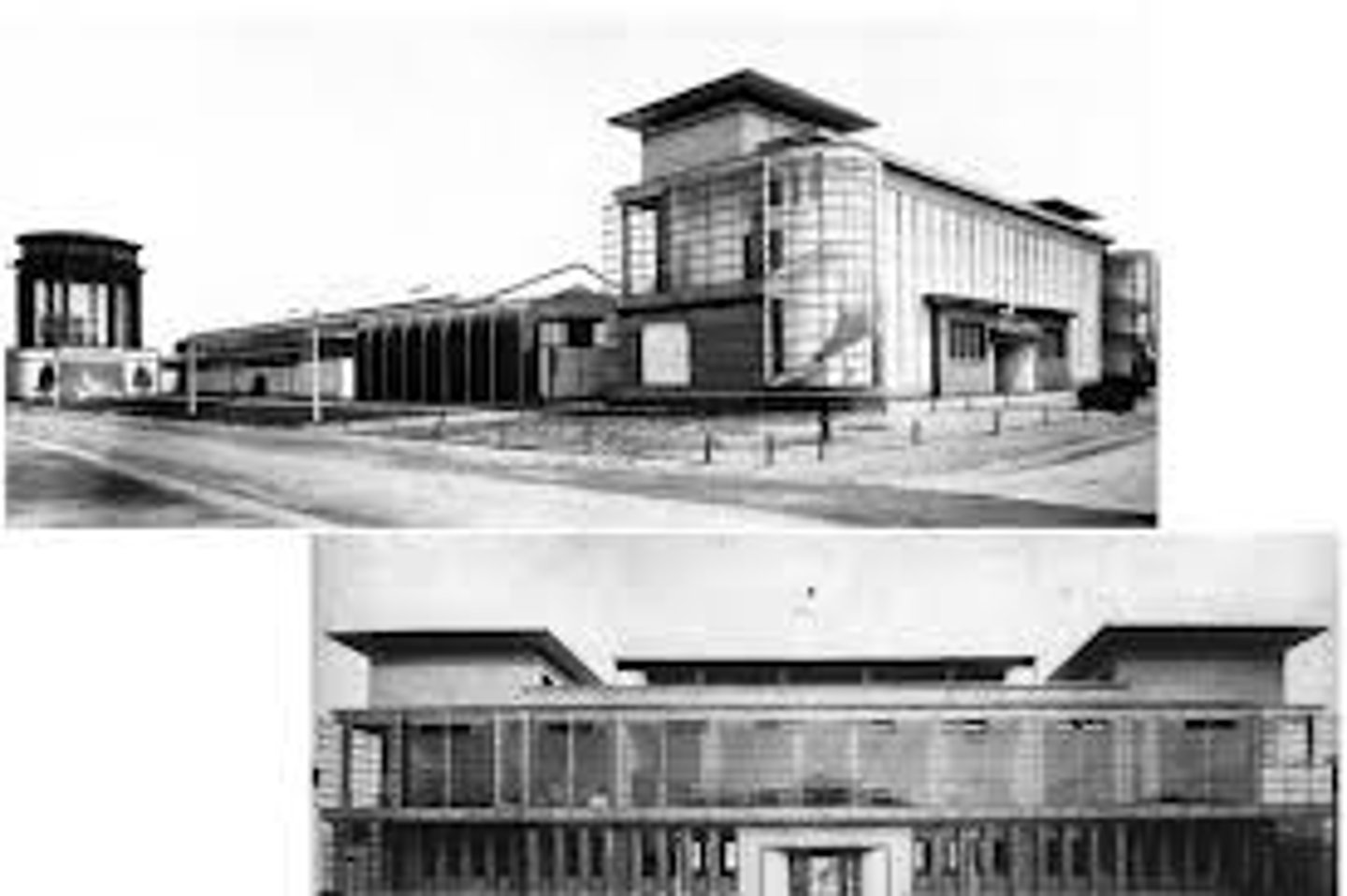
Eric Mendelsohn: Einstein Tower, Potsdam, 1924
Expressional Rationalism
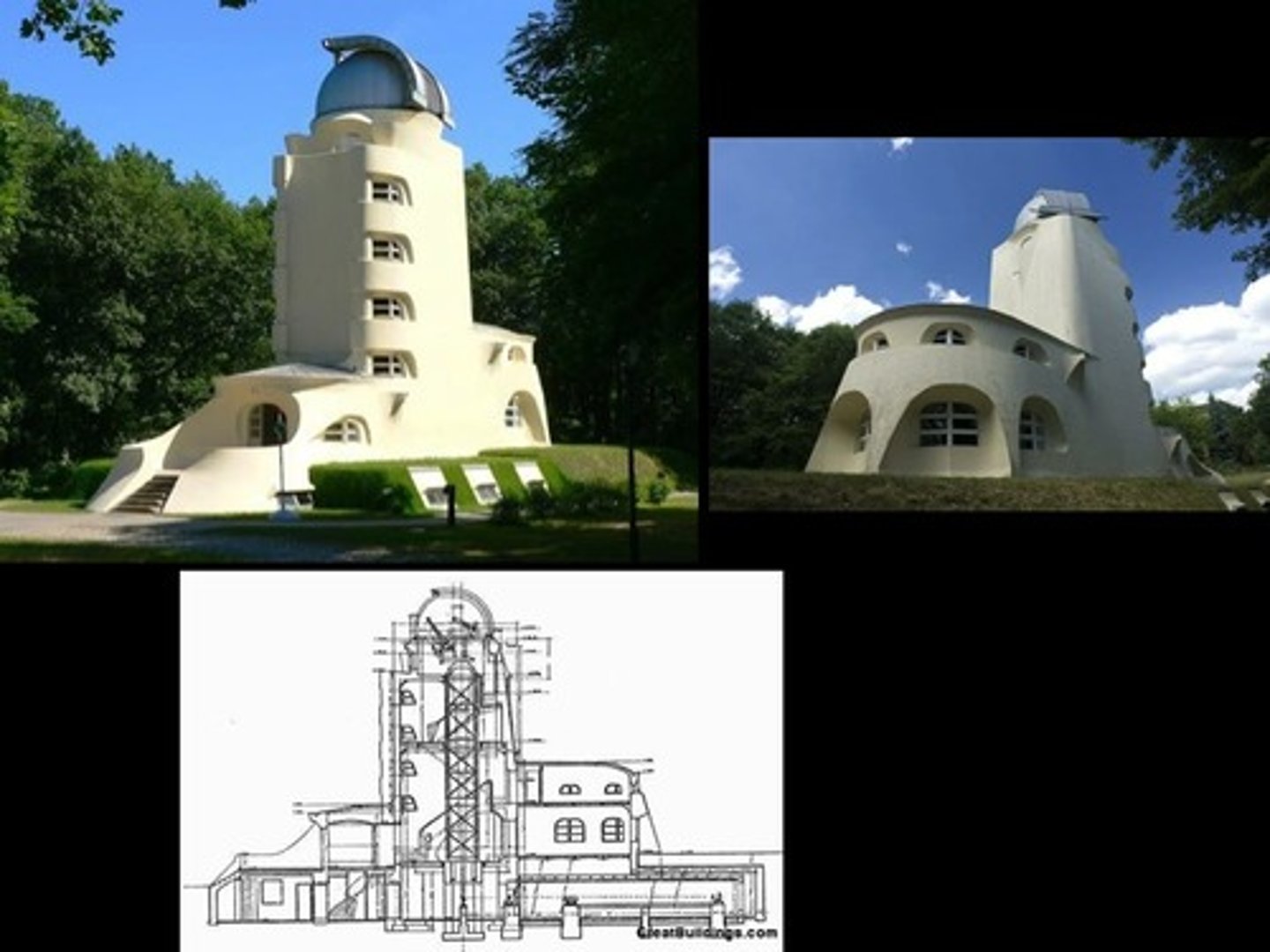
a movement in which architects made use of modern materials and the products of mass production, but sought a poetic, expressive architecture, not standardized architectural solutions and banal forms.
Expressionism

Bruno Taut: Glass Pavilion, Werkbund Exhibition, Cologne, 1914
Expressionism
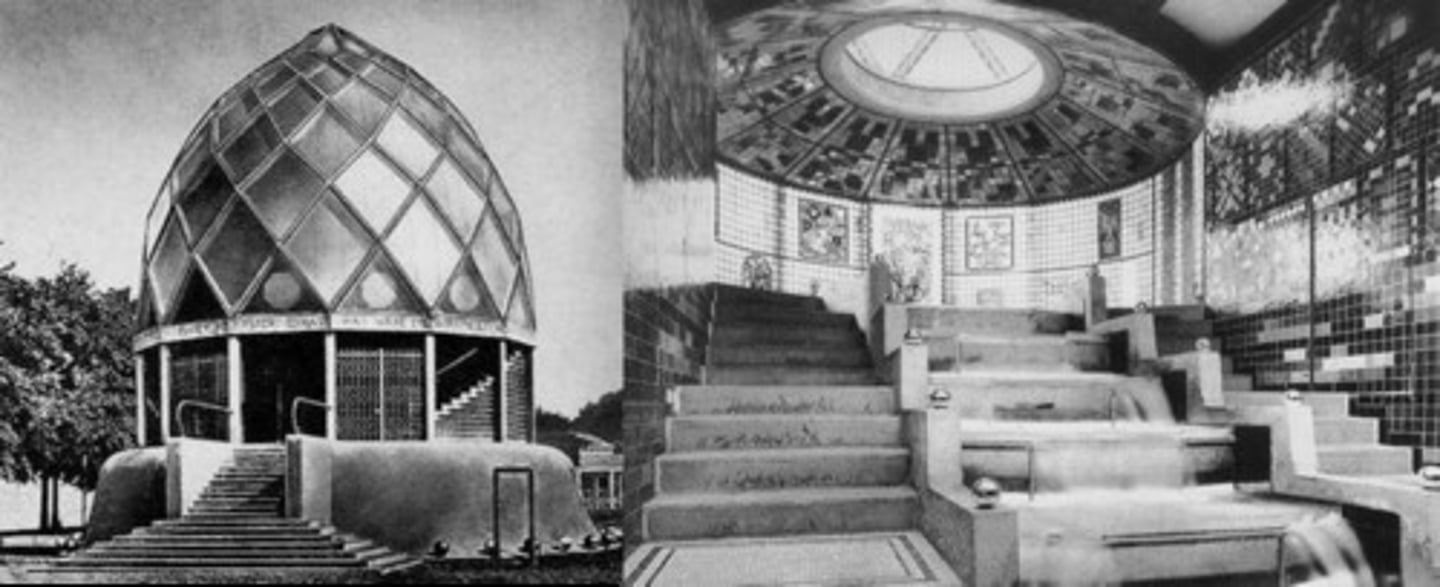
believed that the future of the arts lay in visually expressing the dynamic forces produced by modern industry. A love affair not with the products of mass production, but with the means and methods of mass production, industrialization, the modern world: machines, speed, electricity and artificial light, movement through space and time, the impermanence and pace of modern life.
Futurism
Walter Gropius: Bauhaus Academy, Dessau, Germany (1920's)
Rationalism of Craft and Material
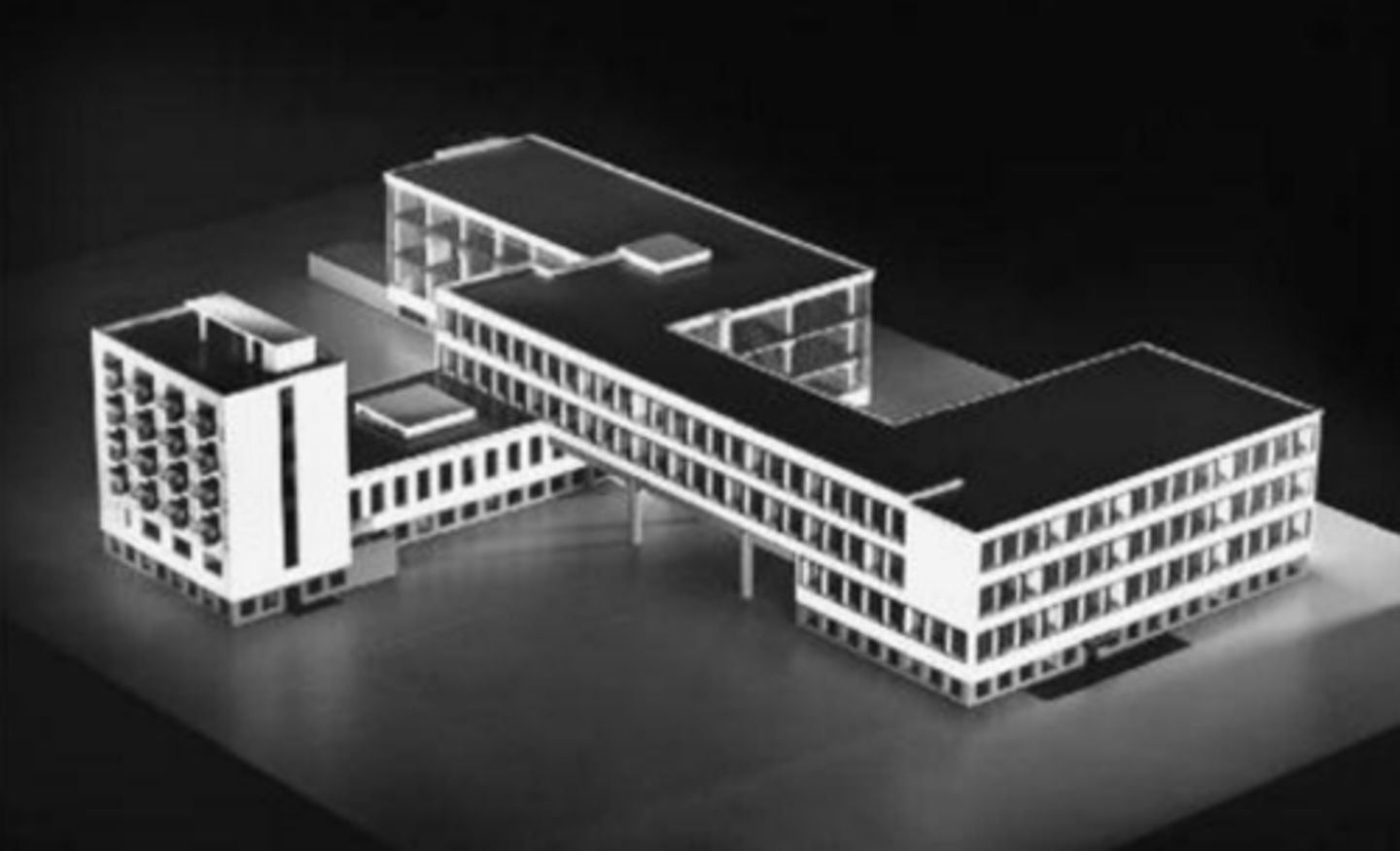
Antonio St. 'Ella : Drawings for La Citta' Nuova (1910)
Example of Futurism and Rationalism

Stuttgart: Weissenhofsiedlung Exhibit

Mies van der Rohe: Barcelona Pavilion, Barcelona (1920's)
Modernism
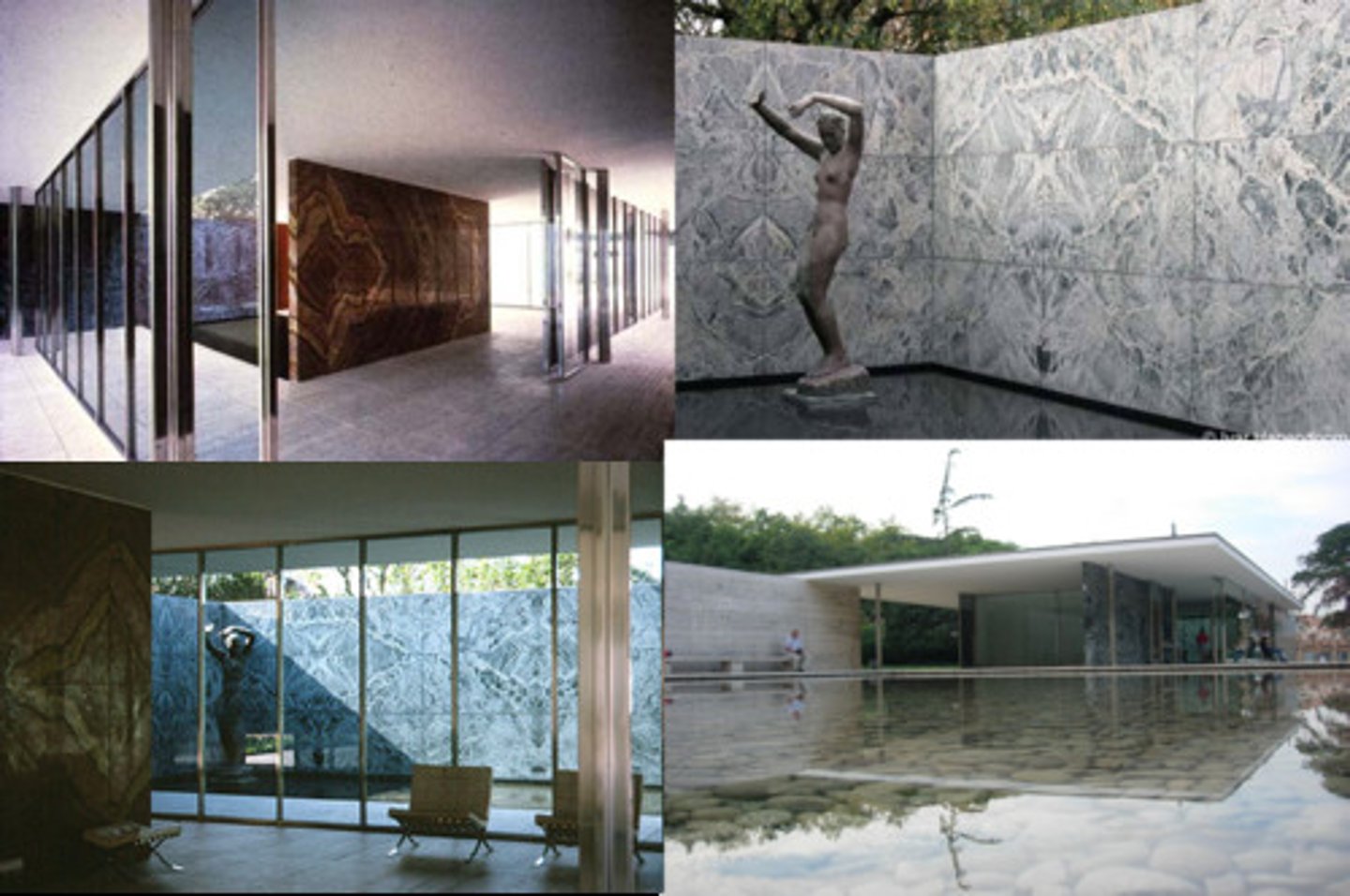
Brno
Ludwig Mies van der Rohe: Tugendhat House, 1928-30,
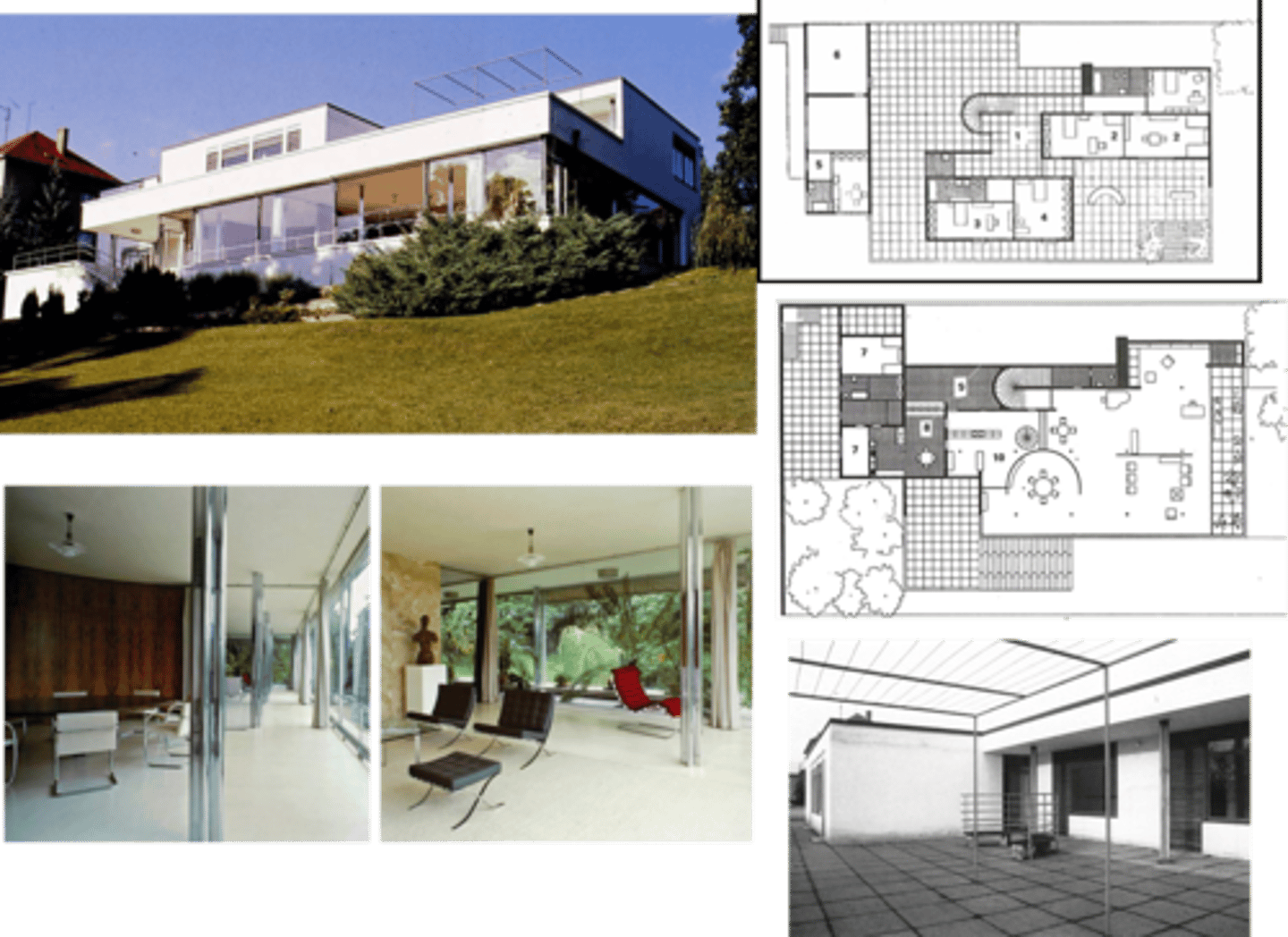
Social Reform, Economic Justice, and artistic renewal
What did the arts and crafts movement hope to fix?
o Romantic and picturesque movement in architecture: drew inspiration from ancient Greece and Rome: MAJOR ROLE IN RATIONALISM
· Gothic Revival
o The idea that all complex ideas are combinations of two or more simple ideas
· What is associatism?
o Use of materials around the area
· Vernacular Architecture
o The process of making your own system by borrowing from two or more other systems
· Eclecticism
o Originating in decorative arts: plant and animal forms found in nature
· Art Nouveau Architecture
Charles Garnier
Paris Opera, 1861-74
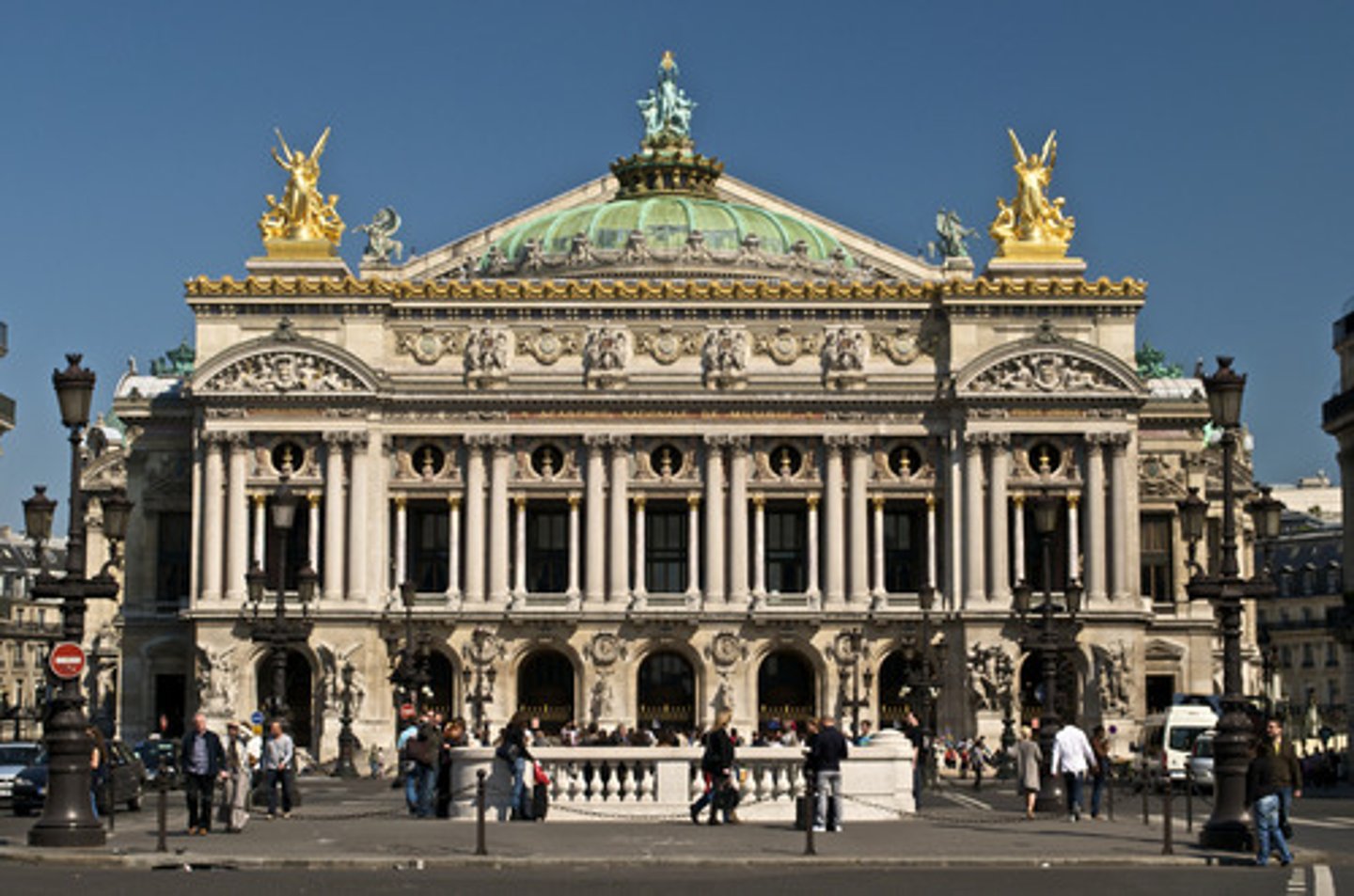
Brunoleschi
-Understandable space
-First Renaissance Architect
William Morris
-Craft Traditions
-Economic/Social improvements
Philip Webb
Red House
Pioneer of Arts & Crafts
Vernacular Architecture
Joseph Paxton
Designed the Crystal Palace
Not an architect, but a gardener
Gustave Eiffel
Ball and Socket
Bridges
Engineer
Rationalist
Julia Morgan
-First women to be admitted to Ecole
-First registered w/ architect
-Apprentice to Bernard Maybach
Otto Wagner
-Postal savings bank, Vienna, 1904-1906
-Removed Details
-Modern Tech into classical design
Auguste Perrett
Played around with concrete
Head and beak system
Gunner Asplund
-Stockholm public library
-classicism in government arch
Charles Voysey
The Orchard
CR Macintosh
-Influence of Vernacular Arch
-Importance of Japanese Timber Arch
Charles and Henry Greene
-American architects that studied Japanese architecture
-they were struck by the natural materials (arts and crafts movement)
-brackets, structures, rounded edges
-Gamble House
Victor Horta, Tassel House, Brussels, 1892-93
-Tassel House, Brussels
-Art Nouveau
-Very Decorative
-Likes ornamentation
William Jenny
-Point Load system
-Thermally Insulated walls
-possibility of curtain walls
H.H. Richardson
-Marshall Field Wholesale Store
-Made masonry cook heavy
Louis Sullivan
-United States architect known for his steel framed skyscrapers and for coining the phrase 'form follows function' (1856-1924)
-Ornament accentuates the purpose of the building
-Did not want to follow classical principles
Frank Lloyd Wright
-Worked under Louis Sullivan
-Arts and Crafts
Mies Van de Rohe
"less is more"
Minimalist
o The structural system is the architectural expression
o Use of materials: exploit qualities, capabilities of material
o EXPOSE THE STRUCTURE
· Structural Rationalism
o Additions to pre-existing buildings
o Structural capabilities as an aesthetic
o Stone architecture
o Plant form
o Began integrating modern materials
· What were architects doing with Iron?